












Number 04, April 2016
IEM Registered on 1 May 1959
MAJLIS BAGI SESI / IEM COUNCIL SESSION /
YANG DIPERTUA / PRESIDENT
Y.Bhg. Dato’ Ir. Li Cho Ho k
TIMBALAN YANG DIPERTUA / DEPUTY PRESIDENT
Ir. Tan Yean Chin
NAIB YANG DIPERTUA / VICE PRESIDENTS
Y.Bhg. Dato’ Ir. Dr A d Seo Kia Ha , Ir. Lee We g O , Ir. Gopal Naria Kut , Ir. Prof. Dr Ruslan bin Hassan, Ir. Lai Sze Ching, Ir. Lee Boon Chong, Ir. David Lai Kong Phooi
SETIAUSAHA KEHORMAT / HONORARY SECRETARY
Ir. Yam Teong Sian
BENDAHARI KEHORMAT / HONORARY TREASURER
Ir. Prof. Dr Jefre Chia g Choo g Lui
BEKAS YANG DIPERTUA TERAKHIR / IMMEDIATE PAST PRESIDENT Ir. Choo Kok Be g
BEKAS YANG DIPERTUA / PAST PRESIDENTS
Y.Bhg. Academician Tan Sri Dato’ Ir. (Dr) Hj. Ahmad Zaidee bin Laidin, Y.Bhg. Dato’ Ir. Dr Gue See Se , Y.Bhg. A ade i ia Dato’ Ir. Prof. Dr Chuah Hea Teik, Ir. Vi e t Che Ki Kieong
WAKIL AWAM / CIVIL REPRESENTATIVE
Ir. Prof. Dr Mohd. )a i i Ju aat
WAKIL MEKANIKAL / MECHANICAL REPRESENTATIVE
Ir. Dr Ka a M. Mu isa
WAKIL ELEKTRIK / ELECTRICAL REPRESENTATIVE
Y.Bhg. Dato’ Ir. Ali Askar i Sher Moha ad
WAKIL STRUKTUR / STRUCTURAL REPRESENTATIVE
Ir. Hooi Wi g Chue
WAKIL KIMIA / CHEMICAL REPRESENTATIVE
Ir. Prof. Dr Tho as Choo g Chea Ya
WAKIL LAIN-LAIN DISPLIN / REPRESENTATIVE TO OTHER DISCIPLINES
Ir. S. Kumar a/l Subramaniam
WAKIL MULTIMEDIA DAN ICT / ICT AND MULTIMEDIA REPRESENTATIVE
Mr. A dul Fatah i Mohd. Yai , M.I.E.M.
AHLI MAJLIS / COUNCIL MEMBERS
Ir. Dr Ta Chee Fai, Ir. Tio g Ngo Pu, Ir. Yau Chau Fo g, Ir. Teh Pia Ngi, Ir. Ki Kek
Seo g, Ir. Cho g Chi Meo , Ir. Chi Kua H a, Ir. Asso . Prof. Dr Vig a Ku ara Ra a ha dara urth , Ir. Lee Che g Pa , Ir. O g Chi g Loo , Ir. Gar Li E g H a, Y.Bhg. Dato’ Ir. Noor Az i i Jaafar, Ir. A i uddi i Mohd Baki, Ir. Mohd Radzi i Salleh, Ir. O g Sa g Woh, Ir. Mohd Khir i Muha ad, Ir. Asso . Prof. Dr Norlida Bi i Bu i a i , Y. Bhg. Dato’ Ir. Ha api i Moha ad Noor, Ir. Dr Ah ad A uar i Oth a , Ir. Ishak i A dul Rah a , Ir. PE Cho g, Ir. Ng Yo g Ko g, Ir. Teji der Si gh, Ir. Sreedara a/l Ra a , Ir. Roger Wo g Chi We g
AHLI MAJLIS JEMPUTAN / INVITED COUNCIL MEMBERS
Y. Bhg. Datuk Ir. Rosali e Ga e dra, Y. Bhg. Dato’ Ir. A dul Rashid i Maidi , Y.Bhg. Dato’ Ir. Mohd Az i i Is ail
PENGERUSI CAWANGAN / BRANCH CHAIRMAN
. Pulau Pi a g: Ir. Dr Mui Kai Yi
. Selata : Ir. Asso . Prof. Ha ai i i A dullah
. Perak: Ir. Lau Wi Sa g
4. Kedah-Perlis: Ir. Hj. Abdullah bin Othman
. Negeri Se ila : Ir. Shahri A ri i Jahari
. Kela ta : Ir. Hj. Mohd )ai i A Ha id
7. Terengganu: Ir. Atemin bin Sulong
. Melaka: Ir. Nur Fazil Noor Moha ed
. Sara ak: Ir. Haidel Heli
. Sa ah: Ir. Yahi a i A a g Kahar
. Miri: Ir. Ste e Chi Hui Se g
12. Pahang: Y. Bhg. Dato’ Ir. Hj. A dul Jalil i Hj. Moha ed
AHLI JAWATANKUASA INFORMASI DAN PENERBITAN / STANDING COMMITTEE ON INFORMATION AND PUBLICATIONS / Pe gerusi/Chair a : Ir. Prof. Dr Rusla Hassa
Nai Pe gerusi/Vi e Chair a : Ir. Mohd. Khir Muha ad Seiausaha/Se retar : Ir. Lau Tai O Ketua Pe gara g/Chief Editor: Ir. Prof. Dr Rusla Hassa
Pe gara g Bulei /Bullei Editor: Ir. Mohd. Khir Muha ad
Pe gara g Pri sipal Jur al/Pri ipal Jour al Editor: Ir. Prof. Dr Do i i Foo Ch a Yee
Pe gerusi Perpustakaa /Li rar Chair a : Ir. C.M.M. A oo u ker
Ahli-Ahli/Co itee Me ers: Y.Bhg. Datuk Ir. Prof. Dr O Chee She g, Mr. A dul Fatah i Moha ed Yai M.I.E.M., Ir. Dr Ka a a/l M. Mu isa , Ir. Chi Mee Poo , Ir. Yee Thie Se g, Ir. O g Gua Ho k, Dr Wa g Ho g Kok F.I.E.M., Ir. Dr Oh Seong Por, Ir. Dr A i uddi Mohd Baki, Ir. Teji der Si gh
LEMBAGA PENGARANG/EDITORIAL BOARD 2015/2016
Ketua Pe gara g/Chief Editor: Ir. Prof. Dr Rusla Hassa
Pe gara g Bulei /Bullei Editor: Ir. Mohd. Khir Muha ad
Pe gara g Jur al/Jour al Editor: Ir. Prof. Dr Do i i Foo Ch a Yee
Ahli-ahli/Co itee Me ers: Ir. O g Gua Ho k, Ir. Lau Tai O , Ir. Yee Thie Se g, Dr Wa g Ho g Kok F.I.E.M.
Se retariats: Ja et Li , Ma Lee
COVER NOTE Strength in Diversity of Women Engineers 5

COVER STORY
Strength in Diversity of ASEAN Women Engineers .............................................................6 6 - 14
FEATURE ARTICLES Passion for Corrosion ...........................................16
Techniques to Achieving Good Electrical Connections .........................................................21 16 - 24
PRESIDENT’S CORNER
STEM Roadmap to Meet Growing Demand for Engineers in The Future
SAFE TEA TIME
Engagement Safety Trainings: Part 1, The Journey
FORUMS
25 - 27
28
30 - 40
Lean In Summit Malaysia #LISM2015 ................30
Young Woman Scientists (YWS) Camp, Daejeon, South Korea .........................................33
Technical Visit to 2nd Penang Bridge .................37
METD-EETD to Lead IEM Presence at ASEAN M&E Show 2016 ....................................40
GLOBE TREKKING
Largest Water Village in The World
PINK PAGE
Professional Interview
BLUE PAGE
Membership List
45
46 - 48


By Ir. Assoc. Professor Dr Leong Wai Yie Chairman, IEM Women Engineers Section
Ir. Assoc. Professor Dr Leong Wai Yie is the Chief Executive Oficer of Golden Brain Sdn. Bhd., a company dealing in left-brain education training, telecommunications design, signal processing and biomedical processing.
The IEM-Women Engineers Section (IEM-WE) has put in a lot of effort to provide a platform that recognises women engineers who have made outstanding contributions to the profession and community.
WE recognises women engineers who have overcome barriers to pursue engineering orwhohaveaffectedtheircommunitiesthroughtheirdedicationandinvolvementtoinspire, engage and support more women engineering students as well as keep them motivated.
In this issue, WE talks to women engineers from diverse disciplines on various related issues such as gender equality at the workplace, their future in engineering, what makes good women engineers, work-life balance and the challenges they face in professional growth.
WE also presents some of recent activities including involvements in the National Women Summit, WEAFEO Forum & Initiatives during the CAFEO 33 in Penang and the Lean In Summit.
There are women with outstanding achievements in the field of science, technology, engineering and mathematics (STEM). They have shown excellent leadership qualities with their persistence in sharing their knowledge of STEM with the pre-university community, mentoring students and supporting the formation of local WE branches.
Women engineers have also shown exemplary leadership and an extraordinary commitment in activities that support and meet the visions of WE at national, regional and international levels. WE appreciates their efforts and their commitment to the development andtheprogressionofwomeninengineeringwhichhaveresultedincorporatepartnerships between industry, academia and community.
DIMENSION PUBLISHING SDN. BHD. (449732-T)
Le el - - , PJX-HM Shah To er, No. A, Persiara Barat, Petali g Ja a, Sela gor Darul Ehsa , Mala sia.
Tel: + Fa : +
E- ail: i fo@di e sio pu lishi g. o
We site: .di e sio pu lishi g. o
For ad erise e t pla e e ts a d su s ripio s, please o ta t:
DIMENSION PUBLISHING SDN. BHD. (449732-T) at + , or E- ail: i fo@di e sio pu lishi g. o
Su s ripio Depart e t E- ail: i fo@di e sio pu lishi g. o
Pri ted
HOFFSET PRINTING SDN. BHD. -V No. , Jala TPK / , Ta a Peri dustria Ki rara, Pu ho g, Sela gor Darul Ehsa , Mala sia. Tel: + Fa : +
Mailer
PERFECT
Chair a ROBERT MEBRUER CEO/Pu lisher PATRICK LEUNG
Ge eralMa ager SHIRLEY THAM shirley@dimensionpublishing.com
HeadofMarkei g&Busi essDe elop e t JOSEPH HOW joseph@dimensionpublishing.com
Editor TAN BEE HONG bee@dimensionpublishing.com
Co tri ui gWriters PUTRI )ANINA & )OE PHOON putri@dimensionpublishing.com zoe@dimensionpublishing.com
Se iorGraphi Desig er SUMATHI MANOKARAN sumathi@dimensionpublishing.com
Graphi Desig er NABEELA AHMAD beela@dimensionpublishing.com
Ad erisi gCo sulta ts A)IM SHAARI & THAM CHOON KIT azim@dimensionpublishing.com ckit@dimensionpublishing.com
A ou ts u Ad i E e ui e YEN YIN yenyin@dimensionpublishing.com
COPYRIGHT

The newly formed Women Engineers of ASEAN Federation of Engineering Organisations (WEAFEO) reinforces support for both professionals and the younger generation of women engineers to scale to greater heights.
Women engineers in ASEAN have come a long way. Today, they are well established in the various ields of engineering and some have become role models who inspire the younger generation.
The ASEAN Federation of Engineering Organisations (AFEO) is an ideal platform for continued contact and interaction for all women engineers. To further strengthen the support, the Women Engineers of ASEAN
Federation of Engineering Organisations (WEAFEO) was formed in 2013. Among other initiatives, it encourages women engineers to remain in practice, promotes greater contribution from women engineers, supports them in their careers, encourages their achievements as engineers and leaders as well as encourages the study and application of engineering among female students.
At the recent Conference of ASEAN Federation of Engineering Organizations (CAFEO 33) in Penang, JURUTERA interviewed several ASEAN women engineers from diverse disciplines on issues related to gender inequality at the workplace, their future in engineering, what makes good women engineers, achieving worklife balance and the challenges they face in their career growth.
On the most significant difficulty as a female science/engineering professional in her country, Er. Emily Tan from Singapore said it is important “to get over our own mental barrier that women are different frommen”.Shenotedthatbothgendershavetheirown strengths and weaknesses, so they should complement each other in all fields instead.
For her, the main issues are work-life balance and workplace culture. She said women engineers face a lack of networking, lack of career support, limits in technical roles, lack of access to senior roles and lack of job opportunities.
Asked if women in leadership and administrative positions appear to be judged more harshly than men who hold same positions, she said: “Perhaps subconsciously, women, especially good looking ones, are judged differently from men in the same position. Often, men are afraid to promote women in case it is perceived that they are ‘improperly associated’ with the women.”
Ir. Assoc. Prof. Hayati Abdullah of Malaysia felt that women are judged more harshly while Ir. Assoc. Prof. Dr Leong Wai Yie of Malaysia did not think so.
Engr. Lydia G. Tansinsin of the Philippines said: “Sometimes. But once male bosses and co-employees observe that a woman engineer is qualified and performs well, they will respect her and cooperate to perform their respective duties. But in some cases, cruel male colleagues may continue to test a woman’s patience to determine if she will be distracted when making decisions. They may even attempt to show that a female leader or administrator is not fit for the position.”
Engr. Juana Torrano-Tapel of the Philippines said: “Women are generally soft-spoken and compassionate but those in top positions can become very decisive and persuasively strong; this is a deviation from their normal behaviour. Furthermore, most women leaders are honest and incorruptible. So, in the eyes of other people, women may seem harsher than men of the same hierarchical level.”
Engr. Si Than of Myanmar said either gender can hold leadership and administrative positions. What matters is that he/she is the right person who can be the most effective in the position.
As for the observation that women are generally less interested in technology but more interested in socially oriented areas, Er. Emily Tan thinks this is the generally perception, so even when men are interested in
socially oriented areas, they dare not express it as it is not the accepted social norm.
Ir. Hayati did not feel that women are less interested in technology while Engr. Torrano-Tapel said: “The overall discernment is that women are more interested in socially oriented areas or concerns. But women engineers and scientists are differently honed in that they have developed an interest in technology-based concerns. This may be due to influence from their environments. For example, if their parents and/or other family members are inclined towards technology and engineering, they will be more likely to develop an interest in the STEM (Science, Technology, Engineering and Mathematics). In addition, women engineers are extraordinary women and comparable to men.”
Engr. Tansinsin felt that women are generally more interested in the social sciences and medical fields which are the “soft sciences” but in this modern age, “these areas have to contend with continuing developments in engineering technologies which facilitate their tasks at their workplaces. So they cannot afford to ignore the technologies produced by engineers.”
Engr. Si Than said women are interested in technology as well as social oriented areas.
When asked for reasons why she may leave her engineering career, Er. Tan said it will be because “someone buys out my company” but definitely not because of limited career prospect, long working hours, unfairness/biased evaluations, a sense of isolation in a male-dominated field or lack of women mentors.
On whether she expects things will get better for women engineers, Er. Tan was optimistic that things will improve with greater awareness and promotions worldwide. She said: “Some day in the future, there may even be more women engineers than men as the university intake for male and female engineers is already about 50:50.”
Ir. Hayati believed that things will definitely get better for women engineers as women in the professional fields are getting more recognised across the board and globally. She felt that the things that make a good woman engineer are the same things that make a good ordinary engineer. “The challenge is to be an extraordinary engineer. Whenever I’m asked this question, Lionel Richie’s song, Three Times A Lady, comes to mind. To make an impact in your profession and in your community, you need to be three times better than your ordinary counterpart,” she said.
Engr.Torrano-Tapelexpectedthenumberofwomen engineers worldwide to increase as more countries are recognising female contribution in all aspects of development. She said: “I’m confident that things will get better for women engineers as our numbers grow
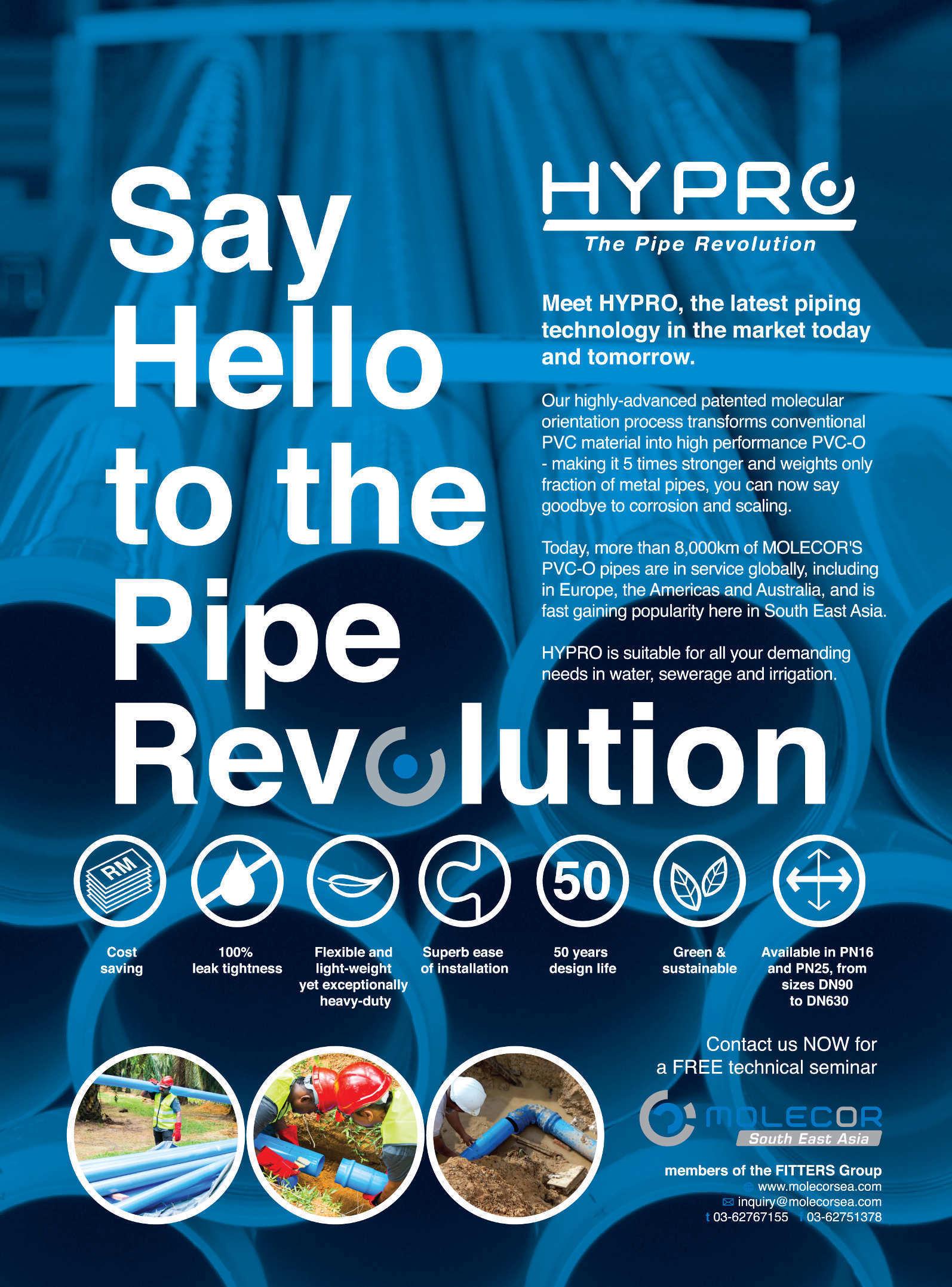
because when there are more women engineers, strength will be our alliance.”
Ir. Leong said women are very keen to take up challenging work to benchmark themselves in mendominated fields. Also, there are new engineering disciplinesthatrequirepreciseandcriticalthinkingwhich best suits women. These include software engineering, multimedia engineering and nanotechnology.
Although Engr. Tansinsin could see a better future for women engineers, she said it would also become more challenging as men now realise that there are areas in engineering which are better performed by women. “Women engineers have a patience cannot be equalled by their male counterparts, and they are also challenged to prove themselves. Examples are biomedical engineering and electronics engineering where one has to be creative and innovative to further improve the communication system.”
Dr Carmel C. Gacho said renewed attention will be given to women engineers to become role models. With their technical backgrounds and capabilities, they are more likely to participate in and contribute actively to society, influencing the priority agenda and policymaking in science and technology, particularly research and development that will improve gender parity.Thus,moreopportunitiesawaitwomenengineers to empower more women in the world. As role models, the task becomes more challenging as women engineers need to be agents of change to intensify women’s involvement in STEM and to address gender issues at the workplace, such as flexible working time, programmes to promote work-life balance recruitment, retention, advancement and leadership.
Likewise, Engr. Si Than expected women engineers to play a more important role in the future.
On what makes a good woman engineer and the kind of challenges she faces, Er. Tan said that “just like all engineers, a good woman engineer should be able to think logically”.
Engr. Torrano-Tapel said if a woman is positive, with few insecurities, and has a mindset to strive for exemplary performance, she won’t settle for the mediocre or use her “charm” to make things happen. She is efficient in using resources including time and effective in multitasking, meaning she will be able to handle a few jobs at one time. She said among the challenges women engineers face are balancing career and family life (especially when she has young children and a demanding spouse), managing herself during pregnancy, lack of women mentors at the workplace and that feeling of isolation when she is the only female in the work area.
Ir. Leong said successful women engineers are those who have excelled not only in their professional lives but also as leaders and role models. “A successful woman engineer should be able to balance her career and family life. We have to cope with challenges such as taking care of the family, which is not easy. Extra care and concern are needed to raise children who can contribute back to society. Maternity leave is another concern which may discourage women engineers from proceeding further. Women need time to recover before they go back to work. Without the support of family members, they will face a lot of difficulties,” she added.

Engr. Tansinsin said a woman engineer must show a serious attitude at work and perform within the allotted time frame. She must be patient when doing professional work that requires meticulous attention. She should also be honest, trustworthy and ethical at work. Women engineers like challenges, especially when those that test their mental capabilities. They will also have to undergo lifelong learning to keep themselves updated on the latest technologies in their field.
Women tend to be more emphatic, diplomatic and flexible, traits that make a woman engineer a good teammemberorleader.It’salsothesecretofsuccessful collaborations in an organisation, said Dr Gacho, who noted that one of the challenges women engineers face, is being able to strike a balance between career and family life.
“To become successful, we need family support, strong technical knowledge, effective working experienceandactiveparticipationinsocialactivities,” said Engr. Si Than.
On whether the government should set a target for 30% of decision-making posts to be held by women and whether such a target is achievable in the engineering industry, Er. Tan said: “We should not try to meet the target just for the sake of meeting the target. But with that as a target, there will be a conscious effort to give women more opportunities.”
Ir. Hayati said it is good to have targets. “For the engineering industry, we need to have the 2N (‘numbers’ and ‘network’) first, which are still a long way to go,” she said.
Engr. Torrano-Tapel said: “I feel that putting a target cap on posts to be held by women may not be fair to men. It is better to have an equal playing field for both. Postings should be based on merit. Let’s encourage women engineers to polish our skills so that we are comparably competitive with our male counterparts. There are exemplary women engineers who have already excelled in their field. We can follow in their footsteps.”
Ir. Leong felt that the target “is very encouraging and will enhance achievement among women”. “Given the opportunities, this target is achievable in the engineering industry,” she added.
Engr. Tansinsin said: “Initially, it may appear to be a good idea to secure leadership posts for women engineers. But competitiveness may be lost, so let the best excel and allow market forces to prevail in the job market. The engineering industry is not keen on the idea of reserving 30% leadership posts for women; there is no question that the industry forces can decide better what is needed to operate efficiently and effectively.”
Dr Gacho noted: “Yes, the government should set a target of at least 30% of decision-making posts to be held by women as women play a central role
in a number of sectors in society. Because of this key role, it is critical that our interests, concerns and issues are incorporated into any effort, particularly decisionor policy-making which should be reflective of an inclusive growth agenda of the government. Yes, this is achievable in the engineering industry or in any sector.”
For Engr. Si Than, the exact target is not important but the ability to make decisions is. She feels the target is not achievable at present.
Asked whether she thought employers are hesitant to promote women to higher positions for fear they would resign in the future to become stay-at-home-mothers or become more preoccupied with their children rather than work, Er. Tan said women of the right calibre should be able to juggle both career and family well.
Ir. Hayati believed this view will not be an issue in the future with advancement in technology, especially in ICT.
“It’s a matter of priority. When my children were small, my first priority was their welfare. Now that they’re grown up, I can focus on my career and need less time to supervise them. A text message every now and then to check on them is sufficient,” said Engr. Torrano-Tapel.
Ir. Leong said: “Today, women are well educated and there are more and more women in the workplace. Promotion should be based on performance. Being worried unnecessarily will only slow down the development of a company. Outstanding women engineers can adjust their work-family life with ease and move forward. There are many talented women engineers and if a company cannot provide alternative work schedules, it will lose out. If you can’t make accommodations for that, you won’t be able to use such talent.”
Engr. Tansinsin noted: “Employers should not have this kind of attitude just because women engineers may get married and have children. In fact, women generally perform better as they want to prove that family life is not a deterrent to their careers and that they can bring better benefits for their families as well. After all, men engineers may also leave the company, even after they are promoted, as there may be better benefits or offers from other companies.”
Dr Gacho said: “This is no longer true of any organisation, whether private or government, due to enacted laws aimed at achieving gender equality at the workplace. Today, more employers are inclined to retain talented women and to advance them to higher positions because of what they can contribute to an organisation; this is what matters most. If a woman is seen to be an asset, an employer will usually provide incentives and family-friendly human resource support facilities such as flexi-time and exclusive training as well as onsite child daycare and programmes.

“If this is not the case at the workplace, the scenario can only be changed if women have equally representation in the ranks of executive officers and leaders. It is only when there are sufficient numbers of women on the corporate ladder that the muchneeded support will be realised since women leaders or executives with family and children will be familiar with having to balance career and family and consequently, are more flexible and sympathetic towards female staff.”
But Engr. Si Than felt that it was true that employers were hesitant to advance women to higher positions for fear they would resign when they become mothers.
The women engineers were also asked about the view that as much as a woman may want to get to greater heights before pursuing other interests, there’s always the desire to get married and have children. This may then push a woman to slow down in her career to meet the increasing demands of family.
Ir. Hayati said the nurturing attribute is what makes women so special and it is also the driving force that makes women stronger. With a good support system, family commitments should not be a major obstacle to succeed at work.
Engr. Torrano-Tapel felt that the bottom line of such a decision is “where does my heart belong?”, “Where do I feel true happiness?”, “Is it my career or my sharing with my family?”.
Ir. Leong said: “We really need to plan for balance in our lives because it doesn’t just happen. We have to make time for things that are important. We have to carve out time from our professional life but that’s not to say things can’t be flexible.”
According to Engr. Tansinsin, “there is no question that women engineers will give priority to family but, as we have said, they will work better as a professional to bring home the needed benefits”.
She added: “A supportive spouse will encourage her to give her best. But if she still cannot balance her career and family, she will resign. This is rare though, as most women engineers can successfully balance work and family. Women are generally used to multitasking.”
Dr Gacho is of the opinion that one has to set shortand long-term goals as well as find ways to achieve success in career and family life while Engr. Si Than said the view regarding the employers “is correct”.
On promoting gender equality at the workplace, Er. Tan said it can be done by empowering women in leadership positions while organisations can fasttrack gender equality and demonstrate its practical benefits. But, she added, “We should empower a person for leadership qualities based on meritocracy, not gender.”
Ir. Hayati noted that we should not focus on gender at the workplace. She said: “Instead, let us promote harmony and tolerance as well as focus on quality, performance and deliverables. If a woman excels in
these areas, a leadership position will be a natural progression.”
Engr. Torrano-Tapel said gender equality starts from birth. Equal treatment and opportunities should be given whether a child is male or female and parents should encourage their daughters to join the labour force as they do their sons. The government should promote the same political rights and participation of women.
“Transform your mind! Management must be open minded and willing to accept women in leadership. We believe in the power of women and their ability to make a difference. To make an impact and make it happen is genuinely extraordinary. We need to pull ourselves up and remind ourselves how outstanding we really are,” said Ir. Leong.
Engr. Tansinsin added: “First, gender equality can be promoted if there is a good recruitment system. Competition among the applicants is the best strategy for promoting gender equality. Second, projects can be developed or tailored for women engineers. In the Philippines, there’s a mandate to reserve 5%-10% of government budget for gender equality. The 1986 Philippine Constitution guarantees equality in the employment of women and men at workplaces.”
Dr Gacho suggested offering training programmes or a re-orientation period for female employees after parental leave of more than three months so as to give them the necessary support for technical updating, professional development and skills acquisition in order to boost their self-confidence and make them feel welcomed.
Engr. Si Than said Myanmar citizens have equal rights at all levels according to the country’s history, culture and laws. Gender equality can be promoted by producing educated women in all sectors.
The women engineers were also asked about the main challenges that impede professional growth and prevent women’s reach and stay in decisionmaking roles. One scenario is societal structure which is responsible for the idea that men are inherently breadwinners and leaders while women are the caretaker. This traditional view that career women are unfit mothers who may not be able to balance work and family life, still exists today and remains a concern even in modern societies.
“Fortunately in Singapore, it’s difficult to pinpoint any challenge that impedes women’s professional growth. The challenge will be our own mental obstacle, the perception that we are lesser than others,” said Er. Tan.
Ir. Hayati said: “This view may be prevalent in some parts of the world or society but I am inclined to believe it does not exist in a modern and advanced society. Mindsets are changing and, as I had mentioned earlier, the numbers and networking are what matters.”
Engr. Torrano-Tapel said: “We should create the awarenessthatworkingwomenareanassetasmothers because they also provide financial support for the family apart from the love and care that ordinary housewives and mothers can give.”
Ir. Leong noted: “The greatest challenge is being open to where life can take you and to embrace the opportunities that come along. Then you have to be able to say ‘no’ to some things in order not to burn out. Once you know some key features of your mind, change these for the better. This way, it will be pretty effortless to be your outstanding self. How we are wired andwhatwecandotochangethatcanbeverysimple and powerful. We can make choices immediately. We can make possible life changes in an instant.
“We are born with more than enough and we have everything we need to live the life we have always wanted. To be a successful woman engineer, we must stop that voice in our head that nags, worries, obsesses and compares. Instead, turn it into strength, confidence and purpose.”
Engr. Tansinsin said there is no question that many women engineers need to balance their professional life and family life. Times have changed. Women and men are now partners in a marriage, partners who support the family instead of competing with each other. The age-old idea that man is the bread-winner while the woman is the family caretaker, is no longer true today. The idea of a house-husband is no longer alien,especiallyifthewifeearnsabiggersalaryandthe children are growing up and because domestic help is getting scarce or costly. This is prevalent in households in the Philippines and elsewhere in the world.
Dr Gacho said there’s a lack of role models to impart greater awareness of and to share practical experiences to overcome issues on gender inequality at the workplace. However, the modern working environment does consider the special needs of working mothers. More companies are now instituting initiatives to address the needs of employees in order for them to balance career and family.
Meanwhile, Er. Tan agrees with the observation that there are some factors and personal attributes of women that lead to their professional growth. Hard work, a supportive family and a supportive spouse or supervisor are reasons for women doing well in their careers and going far. Mentorship, whether at home or
at the workplace, is key to developing confidence in women as this assures them of their capabilities and creates a social and professional support network. But Er. Tan said “this applies to everyone, regardless of gender”.
For Ir. Hayati, hard work, a supportive family, supportive bosses/supervisors and mentors are key factors to performing well in a career. She agrees that these apply to both men and women. Tradition, culture and faith have an influence on expectations at the workplace, especially for women. Managing these expectations and having good interpersonal skills are also important to success.
Ir. Leong said: “When you are passionate about your work, it can be very challenging to also have a personal life. But we need our personal lives, to get home by a decent time and to not always be talking about work. For mentorship, we all end up drawing on everybody that come into our lives. We tend to take the best things we see in the people we admire and then focus on these. Family members and colleagues as well as welfare and professional organisations will always be good professional role models for us. Even if we are on different career paths and industries, it’s good to be able to communicate with each other for advice.”
Engr. Tansinsin agrees that hard work, perseverance and the support of spouses and bosses are important factors that boost the professional growth of women engineers. Without spousal support, women engineers generally fail professionally, even if they work hard.
Dr Gacho said: “Yes, I believe that oftentimes, women face difficulties managing their work-life balance, particularly if they do not receive ample support. The unconditional support and understanding of family, friends and colleagues will allow a woman to strive hard and work above her normal capacity.”

Engr. Si Than said she concurrs with the observations. However, Er. Tan disagrees with the view that for the few who do make it to higher positions in a corporate environment, the burden of domestic responsibilities eventually catches up and makes it difficult for them to remain in that role. She said it’s all about “quality time that’s needed with the family, not quantity”.
Ir. Leong said: “Get to know people. Show them our passion. Get involved. Be on social media. It’s a lot of hard work and persistence. Some people get their rewards sooner than others. There are no guarantees. I would start by adopting a positive attitude and being confident in my own abilities. Whatever we choose to do, we should do it to our best abilities. It will make us proud of what we have accomplished and people will notice that.
“My advice is to not be afraid to take risks outside our comfort zones. That’s how we will find out what




makes us happy. Take advantage of every opportunity to meet new people and build new relationships because these will serve us in our careers, whether it’s moving to a new job or bringing in new clients.”
Engr. Tansinsin said there are ways to soften the impact on family life. With household help becoming scarce and costly today, family planning is a must for married women engineers in order that family life will not interfere too much with their professional life.
Engr. Si Than felt that time management at both the workplace and family home, is important for women engineers to succeed.
Indeed, there may be great challenges to face and hurdles to clear but it is clear that generally, women engineers are pumped up with optimism about the future of their profession as more and more countries start to recognise women’s contributions in all aspects of development.




Er. Emily Tan, Singapore, Council Member and Chairman of Women in Science, Engineering & Research (WiSER) for the Institution of Engineers Singapore (IES), Managing Director of TSM Consultancy Pte. Ltd. Engineering major/discipline –trafic and transport planning and engineering.
Ir. Assoc. Prof. Hayati Abdullah, Malaysia, Ddirector, Centre for Teaching & Learning, UTM Academic Leadership (UTM Lead), Universiti Teknologi Malaysia, mechanical engineering.
Engr. Juana Torrano-Tapel, the Phillipines, President of Women Engineers Network-PTC, agricultural engineering.
Ir. Assoc. Prof. Dr Leong Wai Yie, Malaysia, Chairman of IEM-WE, Chairman of WEAFEO, electronic engineering.
Engr. Lydia G. Tansinsin, the Philippines, Chartered President and Adviser of Philippine Technological Council (PTC) and WEAFEO, chemical engineering.
Dr Carmel C. Gacho, Treasurer of Women Engineers Network-Philippines, chemical engineering/environmental research.
Engr. Si Than, Myanmar, Vice President of Myanmar Engineering Society (MES), president of MES-WE, civil engineering.
Engr. Khin Sandar Tun, Myanmar, Joint General Secretary of MES, Secretary of MES-WE, electronic engineering.


Michelle Lau is the Committee Member of Women Engineers Section. She is an NACE International certiied Cathodic Protection Specialist and the General Manager of Mach3 Engineering Sdn Bhd. She graduated in Materials Engineering from Monash University, Australia and, for the past 19 years, pursued a career in the ield of cathodic protection.
“You are a what engineer?” asked an acquaintance one day, over coffee.
“A corrosion engineer,” I answered some what dismissively.
“Youdealwithrust?”mynewfriendprobed further.
“Yes! See those ugly looking brown flakes falling off this fence here?” I said, pointing to Exhibit A. “I deal with that.”
While not many people can actually grasp the idea of what a corrosion engineer does, it has by far, been the most challenging, yet fulfilling part of my life and my career. My family andclosefriendshavecometounderstandthe demands of my job and how it has never failed to put a smile on my face.
We are that rare breed of people who live and breathe to combat a naturally occurring process called corrosion or basically, metal degradation. Rust is bad. Rust is ugly and it makesuscringeandhyperventilatetoacertain extent and, yes, we know why and how your metal grille doors are rusty.
Wevalueourpossessions,whichmayrange from offshore structures such as oil rigs, marine vesselsandsubmarinepipelinestounderground onshore structures such as cross-country oil and gas pipelines and water distribution pipes. Then there are hazardous petrochemical and power plants, aerospace lightweight alloys and composites and medical implants. Yes,
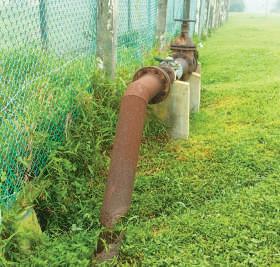
the world is a playground for rust but we, the corrosion engineers, are here to prevent it.
So we can imagine a corrosion engineer having to travel to the remotest parts of the world – not exactly a five-star holiday nor a Trip Advisor reviewed site. We travel far and wide to solve corrosion issues. On a positive note, we amass a different level of travel experience altogether as part and parcel of the job. Every site we visit is a new challenge, and that is what drives us or at least, me.
Eachyear,corrosionengineersfromaround theworldwillgatherintheUSandspendaweek to discuss methods to combat corrosion, from new technologies and new methodologies to exotic materials. Each problem has an individualsignatureattached,sotwoseemingly similar problems may be resolved in totally different ways. This is what makes our work scope so interesting.
From the beginning of my career to now being as an entrepreneur in the corrosion business for more than 14 years, I have come a long way but I have never lost my passion for what I do. Together with others in the same field, I strive to advocate for corrosion awareness, corrosion mitigation and corrosion managementacrossallindustrysectors,notjust locally, but worldwide. It’s our cup of tea and we are proud of it.
While the world of corrosion engineering may be dominated by men, a growing number

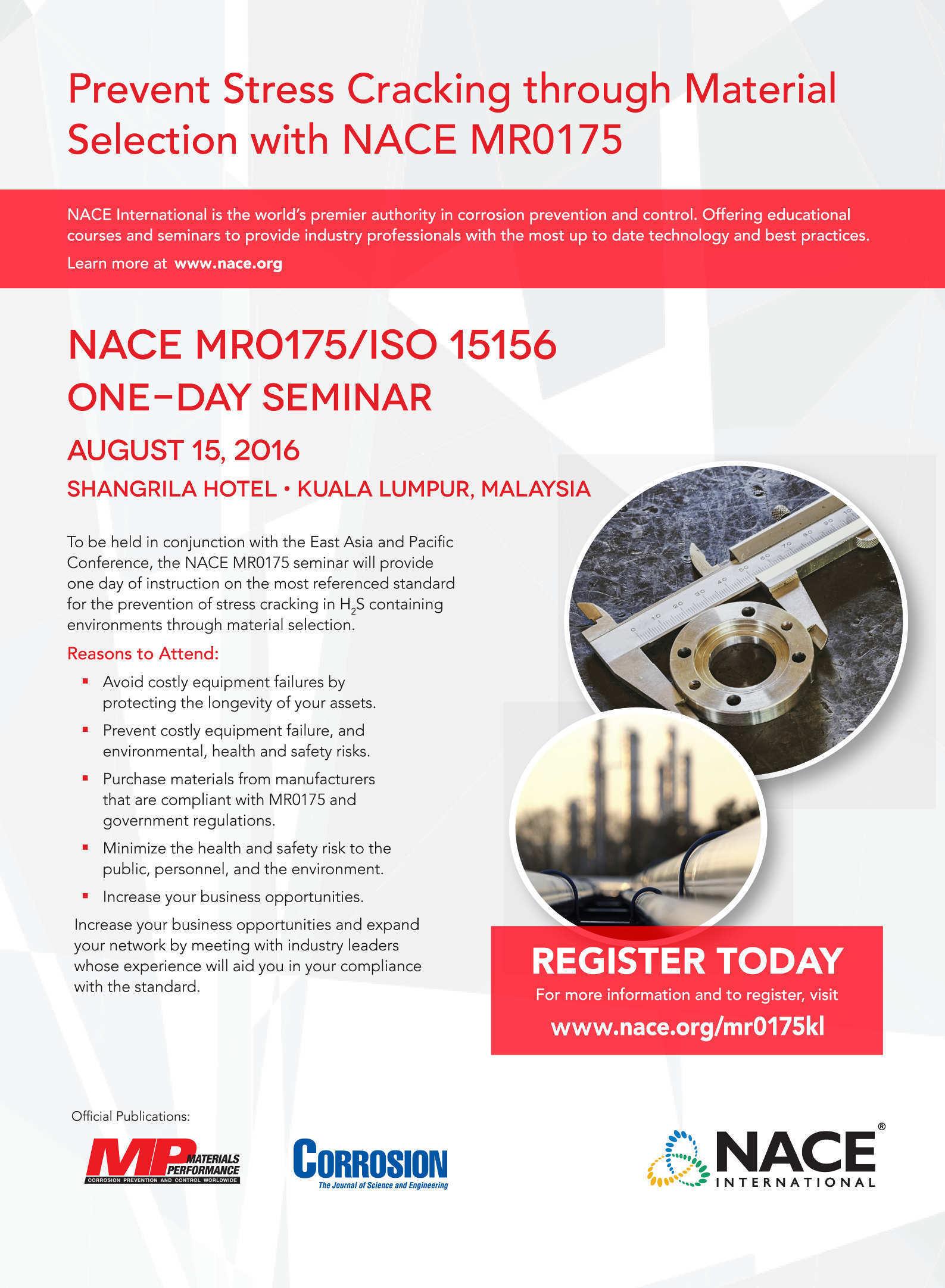




of women are taking up the challenge. While some had chosen to be a corrosion engineer out of interest, a few otherschancedupontheindustrybyaccident.Butwhatever the case, these women below have one thing in common: Passion for the industry.
Dr Azzura Ismail, who is attached to Universiti Tun Hussein Onn, enjoys her role in working to solve material corrosionissuesfromoffshore oil exploration to the medical world. At the same time, she hopes to serve the people around her with her passionate research towards a greener environment and reducing the cost of corrosion maintenance.



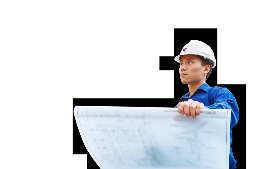

Corrosion is not just about what is occurring on the surface, but at the interface of materials.
As a young graduate, Sherine Wong stumbled upon corrosion engineering by accident. It was a job she accepted without hesitation. She said: “It is a challenging yet rewarding profession as it requires the knowledge of a chemical engineer, a chemist and a materials engineer to understand the entire process system, the chemistry behind the corrosion reaction and the metallurgy or properties of various steels”.

Another young graduate, Kamila bte AbdulHamid, has been in the corrosion industry for the past three years and has accumulated handsonexperienceonmorethan 30 projects so far. As a female in a male-dominated world, she found it very challenging and said it required thinking out of the box. She said a corrosion engineer required one to be multidisciplined and a multitasker all the time.
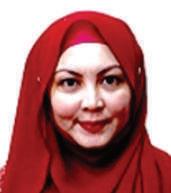
Nurul Asni Mohamed, who has been in the industryfor17years,started her career as Maintenance Engineer with PETRONAS.
Today, she is Principal Engineer (Corrosion) with PETRONAS Group Technical Solutions, which sees her role elevated to policy making for PETRONAS in the capacity of subject matter expert.
Elizah Samat, has worked 12 years with Shell Projects & Technology Group as Senior Materials & Corrosion Engineer. The Klangborn engineer is married with three children and, despite her demanding career and schedule, enjoys cooking and travelling with the family.
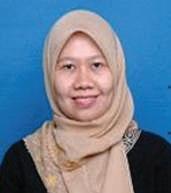
Like many of my peers, the world of corrosion engineering has opened many doors of opportunity for me. It is a niche industry that gives one the opportunity to be part of the solution in whatever discipline of engineering you may have come from. It is by finding this niche that I have experienced a more fulfilling career, widened my network and made lifelong friends across the globe.
Title: Talk “n Dificult t“ treat water and waste water, h“w tubular membranes can be the s“luti“n
5 A”ril 2016
Organisedby :EnvironmentalEngineeringTechnical Division
Time :5.30p.m.–7.30p.m.
CPD/PDP :2
Title: Talk “n Wills, Estate Planning & Value Pr“tecti“n
6 A”ril 2016
Organisedby :SeniorSpecialInterestGroup
Time :5.30p.m.–7.30p.m.
CPD/PDP :0
Title: Technical Visit t“ Malaysia Aut“m“tive Institute
7 A”ril 2016
Organisedby :PublicSectorEngineersSpecial InterestGroup
Time :9.30a.m.–12.30p.m.
CPD/PDP :3
Title: Talk “n Ty”ical Changes Leading t“ C“st Overruns, Delays and Claims in Infrastructure, Oil and Gas Pr“jects
7 A”ril 2016
Organisedby :Oil,GasandMiningEngineering TechnicalDivision
Time :5.30p.m.–7.30p.m.
CPD/PDP :2
Kindly note that the scheduled events below are subject to change. Please visit the IEM website at www.myiem. org.my for more information on the upcoming events.

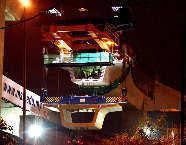




Ir. Dr Ng Kok Chiang, B.Eng (Electrical & Electronics) (University of Western Australia)
PhD ( University of Nottingham, UK)
He is Deputy Chairman for the Consulting Engineers Special Interest Group (CESIG) Technical Division, IEM. Currently he is the Chief Technology Oficer of MyBig Sdn. Bhd. He has worked in the area of renewable energy and its storage.

Ng Choon Guan
Mr. Ng Choon Guan has been involved in various engineering works since 1969 related to electrical and engineering including electrical conductor jointing and termination products and tools.
A good electrical connection is one that conducts current safely at a low temperature, resulting in energy saving, and can last for many years (30 years or even longer).
There are generally three important factors in executing a good electrical connection:
• Type of Connectors
• Crimping Tools and Dies
• Workmanship (Quality of work)
Connectors are either made of copper or aluminium; both have their own respective attributes.
Copper connectors are used to join or end a copperconductor.Theseconnectorsaremade of copper that comes in a high conductivity copper tube of suitable thickness. A lug will have sufficient palm area and barrel length, while a link will have sufficient link length, and is plated with tin to prevent corrosion. Copper has many grades. For electrical purposes, Electrolytic Copper (E.Cu) with purity of 99.9% and conductivity of 99% I.A.C.S. is always used.
Using low quality, recycled copper is not recommended, as the conductivity is only
50% to 85%. Referring to the comparison chart between compliant and non-compliant cable lugs according to MS 1540:2002 (Chart 1), for the same size of cable lugs, when conductivity is low and the wall thickness is less, the current capacity of the cable lug is greatly affected.
Intheexampleofthe300mm2 cablelug,the current capacity for the compliant lug is 561A, as compared to 224A for a non-compliant lug. There is a 59.9% reduction in current capacity.
As for the 240mm2 cable lug, the compliant lug registered a current capacity of 485A while the non-compliant lug at only 304A, a 37.2% less in the current capacity.
Currently, many types of cable connectors are imported, some of which are either not suitableforouruseorareinferiorinquality.These may result in high temperature (energy loss) at connections, or even burn the connectors. The only way to prevent this is to use a standard connector. With this in mind, the Malaysian Standard was developed and obtained in 2002 (MS1540 for Cable Lug) and in 2005 (MS1779 for Cable Link).
Aluminium connectors are used to join or end terminal of aluminium conductors. Aluminium bi-metal connectors, on the other hand, are used solely to join or terminate to copper.

The correct aluminium connectors to use are those with electrical grade aluminium raw material 1050 or 1350. It has purity level of 99.5%, and conductivity is at 60%. Its hardness is soft. Non-electrical grade aluminium, due to its low purity, only has conductivity of 40% to 50% or lower. Its hardness is also wrong, resulting in the aluminium cracking during the crimping process. Therefore it is important to check and insist on electrical grade material when purchasing aluminium connectors.
When it comes to conductivity, aluminium is the best alternative to copper in terms of commercial value and engineering properties. Compared to copper, the specific gravity of aluminium is only a third but its electrical conductivity is up to 60% of that of copper. Aluminium is also 70% cheaper than copper. Due to its lightweight and low cost relatively, aluminium conductors are widely used in electrical projects today.
However, when aluminium comes in contact with copper, it can cause corrosion in a short span of time, resulting in a damaged contact. Since aluminium and copper have different electrical potential and expansion ratios, the hot and cold cycle with exposure to air will increase resistance and corrode the contact. This phenomenon is known as the coupling effect.
In the past, many aluminium conductors installed broke down after a short period of use. This caused consultant engineers to shy away from approving the use of aluminium conductors, resulting in it being less popular for use in indoor electrical wiring.
However, the scenario changed with the introduction of friction welding type Bi-metal connectors. Used widely today, the Bi-metal connector is the best solution to the contact problem between aluminium and copper.
Aluminium and copper are fused in a process called friction welding. This is done by spinning aluminium and copper in a machine to allow the metals to rub against each other, producing high heat. During this stage, a strong force is applied to weld the two metals together. A good quality frictionweldingwillsealthetwometalsurfacesperfectlywithoutanyairgap and this prevents corrosion on the contact. A good and sufficient welding area also contributes to the mechanical strength of the connection.
Quality Bi-metal connectors are mainly produced in Europe, with dimensions that are compliant with France standard NS 68-S-90 titled “Connection of Aluminium Conductor Insulated Cables by Deep Indentation” and type tested to IEC 61238-1 titled “Compression and Mechanical Connectors for Power Cable for Rated Voltages up to 30kV”. TNB and Malaysia have also adopted the standard and the type test.
Many Bi-metal connectors are imported into Malaysia. Some are quality products but there are many inferior ones as well. Therefore it is important to select a Bi-metal connector that is compliant with the above standards and to type test it before it can be considered and accepted as safe to be installed in a project with aluminium conductors.
The second important factor in executing a good electrical connection is to use the correct crimping tools and dies. A proper tool and die are necessary to perform a good connection. Simply buying an international branded tool is not good enough. One must consider a matching die before purchasing the tool.
The hexagon die is usually used for copper connectors. Having the right die is more important than the tools. The German “Din” standard die is not suitable for the Malaysian Standard applications. A customised die suitable for Malaysian connectors is required. Connector manufacturers will always recommend the right size of die and this is usually shown in the catalogue of connectors as illustrated in Chart 2 below:

For aluminium connectors, an indent die is commonly used. There are three advantages in using a constant volume containing die.
• The connector will not bend after crimping
• Thelengthofconnectorbarreliscontrolledaftercrimping
• Crimping position by index on the container
Selection of Crimping Tool and Die:
There are many type of crimping tools in the market today, which includes small mechanical tools, hand operated hydraulic tools and electric/battery operated tools. It is important to choose the right tools. Choosing a tool which can crimp from 16mm2 to 10002 is not practical due to its weight, size and cost. The correct way is to select a small hand tool for 1.5mm2 to 10mm2 connectors, a mid-range hydraulic tool for 16mm2 to 240mm2 connectors and a big hydraulic tool for connectors up to 630mm2. For big connectors that are 300mm2 or larger, an electric pump is strongly recommended so that it is easier for the installer. It is also important to make sure the installer crimps the connectors according to instructions.





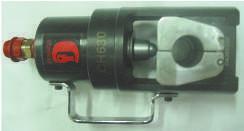
There are various schools of thought on whether the deep-indent type compression is superior to the hexagon type compression. However, results from scientific experiments show that there is absolutely no difference in using the hexagon die or deep-indent die, when matching connector and die are used. Countries like USA, Australia and Germany all use the hexagon die for aluminium connectors, while France, Italy and Malaysia use the indent die.
For copper connectors, current global trend favours indent dies for small conductors and hexagon dies for larger conductors. For aluminium connectors, deep-indent dies are used for all conductors. In fact, indent dies are getting more popular for aluminium connectors because of the advantages in using a containing die.
Manufacturers of electrical compression terminals and joints will have a good understanding of the best way to compress their own connectors; therefore it is recommended to approach them for advice when necessary.
The human factor is equally important in achieving a good electrical connection. It is vital that wiremen and electricians work according to the manufacturer’s instructions. After removing the insulation and cleaning the conductor (if necessary), the wireman or electrician plays an important role in selecting the same size connector and die to execute a good full crimp by using the right crimping tool. For bigger connectors, crimping should be done more than once, or according to manufacturer’s instructionsasshownintheconnectorproductscatalogue.
In Malaysia, precise tools and dies are now easily available. Therefore, when quality connectors are selected, and work is carried out in compliance to standard procedure, all joints and terminations will easily achieve good electrical connections.
The Malaysian Standard on cable lugs and links is meant to standardise and prevent the use of inferior and unsuitable cable lugs in the connection of conductors to electrical equipment. The guidelines for overall installed cable lugs dimensions were drafted with due consideration to the current practices in the industry and the common usage of crimping tools and dies.
To avoid unnecessary problems, the Malaysian Standard should be specified when purchasing cable lugs or cable links. Engineers and planners have the responsibility to specify cable lugs or links that comply with the Malaysian Standard. Users too, should insist on buying the right cable lugs and links so that the connections will be at an optimum temperature. This will avoid dangerous applications and help ensure electrical installations are safe. The use of non-matching die for cable lugs, cable links, and sector copper conductor in electrical installation can be prevented if users are aware of the right standard equipment being used for standard Malaysian cable lugs, links and connector (either copper or aluminium).
Last but not least is workmanship, where the right procedure of crimping must be followed to ensure that the cable lugs, links, connectors and crimping equipment will result in achieving good if not excellent electrical connection.
Title: Talk on Design & Construction of Stabilised Subgrades for Malaysian Roads
7 April 2016
Organisedby :CivilandStructuralEngineering TechnicalDivision
Time :5.30p.m.–7.30p.m.
CPD/PDP :2
Title: Talk On A Sim”liied Equati“n f“r V“ltage Drop”
9 April 2016
Organisedby :ElectricalEngineeringTechnical Division
Time :9.00a.m.–1.00p.m.
CPD/PDP :0
Title: Professional Interview Workshop on Enhanced PI Process
9 April 2016
Organisedby :StandingCommitteeonExamination andQualification
Time :9.00a.m.–1.00p.m.
CPD/PDP :2
Kindly note that the scheduled events below are subject to change. Please visit the IEM website at www.myiem. org.my for more information on the upcoming events.

The Institution of Engineers, Malaysia (IEM) is aware of the declining number of science students which will affect the supply of engineers and technologists in the country in future.
Sciencestudentsarethehumanresources from which universities produce engineers. With fewer science students in schools, there will be a corresponding limitation in the ability of universities to produce the number of engineers that the country needs. For the engineering profession, the declining interest in science subjects in schools will result in a dearth of students eligible to pursue engineering courses in universities.
The consequences are disastrous. It will mean an insufficient number of engineers to implement and maintain the many projects in the country which, in turn, will slow down the pace of national economic development. A shortage of engineers will definitely hinder the nation’s target to achieve developed and high income status.
The Malaysian government places great importance on Science, Technology, Engineering and Mathematics (STEM) education and has set the target ratio of 60:40 Science and Technical versus Art stream. In 2011, only 45% of students graduated from Science stream, including technical and vocational programmes. The number of PMR students who qualified to study science but chose not to do so, increased by approximately 15%. This raises concerns about the education system’s ability to produce sufficient STEM graduates for the nation.
The National Council for Scientific Research and Development estimates that we will need 493,830 scientist and engineers by 2020. However, the Ministry of Science, Technology and Innovation (MOSTI) estimates that there will be a shortfall of 236,000 people. As a professional body for engineers, IEM has a membership of approximately 40,000 members including graduates and students.
There are several factors underlying the declining enrolment and interest in Science subjects. These include limited awareness about STEM, perceived difficulty of STEM subjects, content-heavy curriculum, inconsistent quality of teaching and learning as well as limited and outdated educational infrastructure.
To strengthen STEM education in Malaysia, the challenge lies in getting students to love science and to choose science classes. Science and mathematics subjects must be made interesting, easy to understand, more hands-on and exploratory.
IEM supports the various government agencies in building awareness on Science and Mathematics programmes. It is actively involved in conducting school career awareness talk, competitions and exhibitions about interesting projects on engineering to school children to promote greater interest in engineering. Engineering students are also encouraged to join IEM as Student Members which will enable them to access IEM’s resources and join IEM’s activities, talks and networking sessions.
IEM is a co-organiser (together with AAET, UTAR and MiGHT) for the Kuala Lumpur Engineering Science Fair (KLESF), an annual programme aimed at promoting interest in STEM among primary and secondary school children. This year the KLESF will be held at Mines from 4-6 November, 2016.
IEM is also of the opinion that career prospect is a major factor in the students’ decision when considering study options. In order to educate the public on the diverse career opportunities in engineering, IEM and CIDB will organise the CIDB-IEM Construction Career Fair during International Construction Week 2016 on 12-14 April.
The prospect to reach top positions, appropriate remuneration as well as status recognition for engineers will help motivate school students to take up STEM Education

and then pursue a career in engineering. Recognising the contribution of engineers and providing a structural pathway to the top position in the Civil Service will be a big motivator for students to pursue STEM education.
While it is important to produce more STEM students and engineering graduates to meet the national demand, it is also of paramount importance to address the quality of engineering graduates; this is an area where IEM is ready to assist.
IEMisoftheopinionthat,withthediversityofdegreeprogrammesoffered by the increasing number of universities, there is a need for a standardised benchmarking system to test graduates on engineering fundamentals. IEM proposes to introduce Fundamental Engineering Examination (FEE) as a means to ensure that graduates entering the industry have minimum competency at least, in engineering fundamentals.
The Ministry of Education has acknowledged the importance of STEM as evinced in the Malaysia Education Blueprint 2013-2015. IEM fully supports the Malaysia Education Blueprint 2013-2025 and the roadmap to strengthen the delivery of STEM across the education system to improve technological innovations and make Malaysia a high income nation.
The press clippings published by various media on this article are available for viewing at the IEM Web portal at http://www.myiem.org.my/content/press_ release-305.aspx


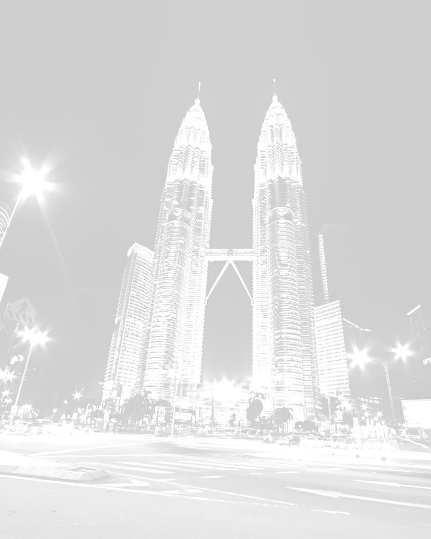












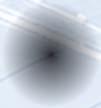






















by Ir. Shum Keng Yan
Ir. Shum Keng Yan is a chemical engineer and a certiied accident prevention and safety practitioner. He advises on EHS in the chemical, fast moving consumer goods, heavy metal manufacturing and building services industries across Asia Paciic and beyond. He regularly delivers talks at conferences, forums and universities.
Let us take a look at redesigning traditional safety trainings. The foundation is still technical training as we need solid technical knowledge before we can move on to engagement.
However, as we move towards ground level implementation and refresher trainings, traditional PowerPoint slides tend to be stale. e-learning fares no better. How often has an employee tried to click forward in an e-learning to get it over with?
In the last 2 articles, we looked at the 3As (Awareness, Acknowledgment and Acceptance)togainownership.Letusnowuse this concept to redesign trainings.
I will use an example to show the design concept.
One of the most effective ways to remember something is through a story. I bet you can recall a favourite story or movie more easily than part of a textbook.
Let’s work through an example. Let’s have a role play of transporting an expensive item from location A to B by road. Weave a story around it by incorporating towns that you need to pass through, using realistic dates. Use towns where some of the participants come from. Select a realistic item as the precious cargo. Use information that the participants can relate to in order to achieve higher engagement. Let us call this activity: “Our Journey”.
Hereisamapof2randompointstotransport our precious item. You should select your own.
Give some basic information pertaining to the route, time of the year and the condition that the item needs to get to point B intact and of course safely. This will create the initial Awareness of the expectations. Let the

participants figure out the logistics, equipment, etc. and provide you with a plan on how to get this done.
When the participants work through this exercise, these points will come up in the group discussion:
1. Route planning7. Weather
2. Type of vehicle(s) 8. Driver’s licence
3. Number of drivers 9. Vehicle Permit / Licence
4. Rest areas10. Insurance
5. Method to secure the artefact 11. Vehicle Inspection
6. Communication12. Driver alertness
What else should we consider for this journey? More on the journey in the next article. Share with me at: pub@iem.org.my.
Eventhoughitisnicetoreachtheendofthe journey, perhaps it is the journey that matters in the end.
The safest risk is the one that you did not take. Often it is the gap in the risk perception that leads to a gap in risk control.


The inaugural Lean In Summit in Malaysia, organised by The Asia Women Circles @ LeanIn.Org was held on 5 December 2015 in Kuala Lumpur. More than 600 delegates, including working professionals from various industries, attended the summit.
LeanIn.Org, was founded by Sheryl Sandberg, the Chief Operating Officer of Facebook and the author of Lean In: Women, Work And The Will To Lead. The Lean In movementseekstoempowerwomentopursue their ambitions professionally and personally as well as focus on what they can do. Inspired by LeanIn, Sarah Chen and Abir Abdul Rahim cofounded Asia Women Circle in Malaysia, a nonprofit organisation supported by LeanIn.Org.
The summit brought together men and women to discuss the key challenges facing society today, such as the high dropout rates of womenfromtheworkforceinMalaysiaandthe declining numbers of women talent in senior management. Women engineers from IEM’s Women Engineers Section moved into action to “Lean In” and support the event.
The Summit was officiated by YB Khairy Jamaluddin, Minister of Youth & Sports. In her keynote speech, H.E. Vicki Treadell, British High Commissioner to Malaysia, encouraged women to lean in to their ambitions. The summit also discussed the topic, “women pushing the boundaries-move past your limiting beliefs and don’t leave before you


have to leave”, which was about women cutting back on their ambitions.
Delegates were also entertained by Chef Abang Brian who shared a quick-fix healthy recipe. The power couple session featured two inspiring couples who spoke on making your partner a real partner.
YBhg. Dato’ Sri Shahrizat Abdul Jalil, Adviser to the Prime Minister on the Development of Women Entrepreneurs and Professionals and Adviser to Lean In Summit, said the summit is a step forward for the nation in achieving at least 30 percent participation of women at decision making positions. Her closing speech inspired the delegates, regardless of gender, to lean in and support the change.

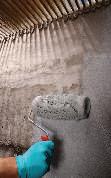



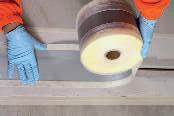

To all IEM male engineers, let’s start leaning in to your family and leaning in to support women in the workplace asresearchshowsthateveryonebenefitswhenmenleanin together! n
Title: 2-Day Course on Recognized Good Practices of Project Management
19 - 20 April 2016
Organisedby :EnvironmentalEngineeringTechnical Division
Time :8.30a.m.–5.00p.m.
CPD/PDP :14
Title: Talk on “Open Source Application for IT/IP Infrastructure”
20 April 2016
Organisedby :InformationandCommunications TechnologySpecialInterestGroup
Time :5.30p.m.–7.30p.m.
CPD/PDP :2
Kindly note that the scheduled events below are subject to change. Please visit the IEM website at www.myiem. org.my for more information on the upcoming events.















In conjunction with the World Science & Technology Forum held on 19-23 October 2015, the Association of Korean Woman Scientists and Engineers (KWSE) organised a camp for woman scientists and engineers from around the world (but especially catering to those from Asia-Pacific nations) at the University of Science and Technology from 17-18 October 2015 at Daejeon, South Korea. It was funded by the Ministry of Science, ICT and Future Planning of Korea (MSIP). So far three similar camps have been held since 2012.
Mongolia as well as varied disciplines of science and engineering.
The author and another Ph.D candidate from Universiti Sains Malaysia represented Malaysia under Women Engineers, IEM, at the camp.
KWSE aims to contribute to the enhancement of scientific capacity as well as to the statusuplifting of woman in industry, academy and research institutes.
Jamilah Abd Rahim is a PhD student in Structural and Material Engineering at Universiti Teknologi MARA (UiTM), Shah Alam. She holds a B.Eng (Hons) Civil Engineering 2009 and Master of Science in Structure 2011 from Universiti Teknologi Mara (UiTM). After completing her Master, she
and Structure Engineer for a year before continuing to do her PhD.
The main objective of holding the camp was to promote global competitiveness and to encourage international cooperation among the target groups. In this particular camp, about 100 participants from 11 countries attended. They came from Korea, Malaysia, Japan, Australia, India, Pakistan, Myanmar, Nepal, Vietnam, Taiwan and
KWSE is the first chair organisation of Asia and Pacific Nation Network (APNN) which is the first regional network of International Network of Woman Engineers and Scientists (INWES).
YWS CAMP ACTIVITIES
In brief, here is a list of six main activities organised at the two-day YWS camp.
11 booths representing each participating country.
The Malaysian booth showcased the Petronas Twin Tower and traditional Malay house replicas, dolls wearing traditional costumes, songket, batik and Malaysian currency.
Best Booth Awards went to Australia and Pakistan.
Five papers were selected for oral presentation, namely papers from Australia, Sri Lanka, Japan, Myanmar and Mongolia. They were done alongside presentations made by the guest lecturers on the first day.
The titles were :
1. Power of Engineering: Attracting Girls into Engineering in an Australian Context
2. A Study on Obesity and Related Factors: Female Undergraduates in Sri Lanka
3. Rapid Age-Hardening of Al-Mg-Cu Alloy and Effect of Trace Addition of Ag
4. Safety Analysis of Infant Formula Milk and Baby Food Locally Available in South Korea
5. Static and Transient Calculation of Molten Salt Reactor Experiment using SERPENT-2/TRACE/ PARCS Code
Simultaneously,posterpresentationstookplaceover the two days. The author’s poster presentation was titled Failure of Expanded Polystyrene Lightweight Concrete (EPS-LWC) Wall Panel with Different Opening Configuration Enhanced with Steel Fibre.
We are a supplier of high quality geosynthetic products used for soft soil stabilization, slope reinforcement, coastal erosion protection, river bank protection, landfills, drainage, road and railway construction.
Our Products:
NEXTILE NON-WOVENS
NEXFORCE HIGH-STRENGTH WOVENS
NEXGRID GEOGRIDS
We also provide design, specification, bill of quantities, cost estimate and drawings free-of-charge.








Get in touch with us: Tel: 03-6142 6638 (Ext. 215) Fax: 03-6142 6693 sales@neusynthetics com
Sales Team:
Saufi (012-568 5611) Gordon (012-355 0872)
It was a minor snapshot of her soonto-be-completed Ph.D work at UiTM Shah Alam.
The Best Poster Award went to a postgraduate student from Japan.
Three inspiring women scientists and engineers were guest lecturers at the YWS Camp.
They were Ariunbolor Purvee, president of WESTEM Mongolia, Jun Hada, chair of WISE Nepal and Lin Jauyn Grace, professor, Center for Condensed Matter Science, National Taiwan University.
Diverse titles presented included:
1. Experiences of Leading Woman Scientists in Mongolia
2. Promoting Gender Inclusion in Engineering through Conductive Workforce Diversity Policy
3. GenderMainstreaminginScience and Technology at Taiwan
All participants spoke at this session to enhance their public speaking skills.
Participants were divided into 10 groups, each provided with a topic, from challenges of women engineers and scientists in the workplace, the toll from work culture and gender equality, to the influence of global women’s voice infuture.
The end of the group discussions revealed that Malaysian women scientists and engineers had better opportunities to advance in their careers compared to those from India, Sri Lanka, Nepal and Vietnam. The main limitation came from the lack of family and spousal support. Most women scientists and engineers opted to leave their chosen careers when they started their families.
An opening dinner was held on the 17October,2015.Itwasatrulyunique and heart-warming experience when all 100 participants showed up, dressed in their national costumes. Each country representative exhibited and explained the customary fashion.
The Best Traditional Costume Award went to Mongolia.
An enjoyable session to burn extra calories took place on the second morningoftheYWSCamp.TheK-Pop dance session was led by Madam Choi Mina, Director of South Korea Association of Sports.
Apart from the three awards given out earlier (Best Booths, Best Poster, and Best Traditional Costume), the Best Friendly Award went to Reena Pandey from Nepal.
She was a member of The Association of South Korean Women Scientist Engineers (KWSE) and is currently pursuing Ph.D in Materials and Life Science at South Korea Institute of Science and Technology (KIST). Her bubbly character, talkativeness, and helpful character warmed everyone to her at YWS camp.
World science experts gathered at the World Science & Technology Forum to share their findings and to formulate policies relating to science and technology in the next 10 years by focusing on sustainable economic growth and solutions to global challenges.
Nobel Prize winners, CEOs from science and technology (S&T) communities, ministers and vice ministers from OECD and ASEAN member states congregated here to chart the S&T landscape. The meeting was conducted in three sections: The OECD Ministerial Meeting Daejeon, the World Science & Technology Forum and the OECD Committee for Scientific and Technological Policy.
South Korean President Park Geun-hye graced the opening session.
Special Acknowledgement
1. The Association of South Korean Women Scientists and Engineers (KWSE)
2. Women Engineers, The Institution of Engineers Malaysia (IEM)
3. Faculty of Civil Engineering, UiTM Shah Alam
4. Ph.D supervisor Prof. Ir. Dr Siti Hawa Hamzah, UiTM Shah Alam
고맙습니다 (gomabseubnida) n









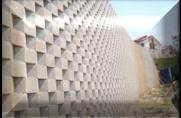
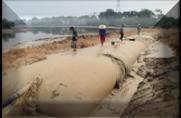





Ci
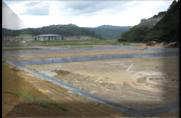

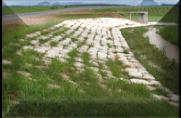
Engineering

Soil Sta ilization, Earth orks, Erosion Control
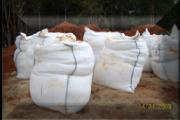
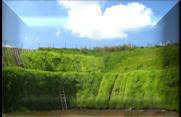

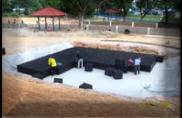

Slope Repair

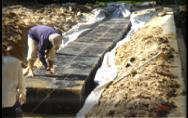
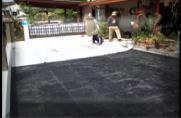
Rei for ed Soil Wall
Ke sto e Wall
Soft Soil Sta ilizatio
Ri er Ba k Prote tio
Slope Erosio Co trol
Flood Mitigatio
Coastal Prote tio
Silt & Sedi e t Co trol
La dfills
O -site Dete tio S ste
Earth orks
I frastru tures
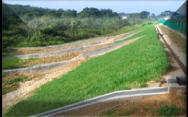
Turf Rei for e e t Matri
Erosio Co trol Bla ket
Coirlog & Stra Watters
Profi Sa dfilled Mattress
Geo ell / Geo e
High Stre gth Geote tile
No o e Geote tile
Pol ester Geogrid
Geo o posite / Geofa ri
Ga io & Ga io Mattress
HDPE Geo e ra e
Geos theti Cla Li er
Che ili k
LANDASAN IMPIAN SDN BHD CO. NO. -T
No - & - , Jala BPP / , Pusat Ba dar Putra Per ai, Seri Ke a ga , Sela gor Darul Ehsa , Mala sia
Tel: - Fa : -
Desig Chi g : - Proje t Teo :E ail: la dasa i pia @g ail. o



It was a beautiful Monday morning. On 23 Nov, 2015, in conjunction with CAFEO 33 held in Penang, ASEAN Women Engineers delegates made a trip to the 2nd Penang Bridge. All 34 participants were greeted by the Managing Director of Jambatan Kedua Sendirian Berhad (JKSB), Dato Ir. Dr Ismail Mohamed Taib.
We were presented with a video clip on Megastructures, produced by National Geographic Channel, on the construction of the bridge. It was truly informative and we learned how the project started, the unpredicted challenges the team encountered during the construction of the bridge as well as various aspects of bridge design as well as major civil and construction works.


The 2nd Penang Bridge, known as Sultan Abdul Halim Muadzam Shah Bridge, is named after the present Yang Di-Pertuan Agong. Built at a cost of RM4.5 billion, it has a dual carriageway, with 2 traffic lanes and 1 motorcycle lane in each direction. Spanning 24km (16.9km over water),it is the longest bridge in South East Asia and its design is based on the double ‘S’ curvy concept, for geological reasons.
Dato Ir. Ismail said he is proud of the environmental sustainability aspects in the design and construction of the bridge. It is currently the longest bridge in the world installed with High Damping Natural Rubber (HDNR) Bearing, an effective seismic isolation system that enables the bridge to with stand an earthquake with a magnitude of 7.5 on the Richter scale.
Another innovative feature is the design and construction of the toll plaza at the bridge

which has a Gold rating of 80% on the Green Building Index (GBI). This measure is aimed at promoting energy efficiency, internal environmental quality and sustainability in operating the toll plaza. The bridge project had received three international accolades for outstanding civil engineering achievement, the latest being Brunel Medal Award from ICE UK.
The women engineers were also given the opportunity to visit JKSB Integrated Transport Information System (ITIS) control room with its live traffic webcams to monitor traffic movement on huge screens.
After the briefing, we took a boat ride to view the underside of the bridge, a highlight of the visit. It was a breezy cruise that took us up close to the bridge, so that we could see the massive piers and box girders. The skyline view of the main span cable-stayed bridge with its 93metre tall pylons and semi-fan layout stay cables system, resembled the sails of a sailing boat when viewed from our boat. We were happily clicking our cameras non-stop throughout the entire boat ride.
We then proceeded to nearby Pulau Aman for a delicious seafood lunch hosted by JKSB. Pulau Aman (Island Of Peace) is a fishing village where boats are moored along the many wooden jetties and some of the wooden houses are built on stilts, right over the sea.
Attheendofthevisit,weleftwithsweetmemoriesanda greaterknowledgeofbridgeconstruction.Wewishtorecord our appreciation Dato Ir. Dr Ismail Mohamed Taib and JKSB for making this trip so memorable for the AFEO delegates of ASEAN Women Engineers. n

Did this equipment fail before it should have?





a li gopti



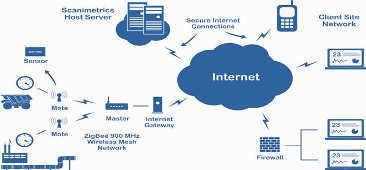
The ra se sor data is se t irelessly fro Motes to aster data o trolled u it Module that is o e ted to i ter et gate ay
The the ra data is strea ed irelessly e ery 4 hours to the S a i etri s’ i ter et loud The data is i tellige tly o itored, pro essed a d i ed so that the etter a d a urate predi ted failures a e ade
If eyo d a threshold li it, a ai te a e e e t is reated a d a alar is triggered! Ho it o ks?


When the curtains are raised at the coming premier ASEAN Mechanical and Electrical Engineering Show 2016 on 23 May, 2016, IEM’s participation will befeltthroughaseriesofforumswhichwillbeconductedby the two technical divisions: METD and EETD. In conjunction with the event, the two divisions will be conducting two parallel streams of forums over three days.
Thefirststreamwillshowcasethethemesoftheshow.On the first day, the forum will feature Green “ENERGY”, which will include green technology and renewable energy. The next day, the theme is “TENAGA” and the panel speakers will comprise prominent players in the Power and Electrical industry. On the final day, several papers on developing technology have been lined up for the theme “REVAC” (Refrigeration, Ventilation and Air-Conditioning).
Participants will also have the option of attending forums in the second stream, with lined-up events within the framework of:
• Development in Code and Standards
• M&E Infrastructure
• Safety and Risk Control
The second stream is a platform to feature developments and changes in the industry. Some of these changes will have a profound effect on current engineering practices. Among the sessions on day one are OSC 3.0 (the submitting procedure to government agencies under the One-StopCentre third edition), the new Uniform Building-By Law (the subtle changes for M&E Engineers) and the IEM M&E Form of Contract. The second day will offer a mix of systems that have seen M&E innovations in, for instance, railway, power plant and water treatment industries.
On May 25, current M&E engineering hot topics and concerns will be discussed. Engr. Raghib Azmi an expert on lifts and escalators, will talk about some of today’s safety concerns and what is being done by engineers. M&E engineers not only need to make good designs but they also have to understand how risks are managed by their installations. Concerns on dust hazards, explosive atmospheres and chemical identification will be presented as well.

The IEM organising committee, led by Ir. Loo Chee Kin and Ir. Dr Cheong Thiam Fook from the IEM Mechanical Engineering Technical Division (METD), will collaborate with UBM (United Business Media) at the biennial show. To support the ASEAN M&E Show, IEM is encouraging its members to attend the 3-in-1 exhibition and forum at the Kuala Lumpur Convention Centre.
This will be the second time that METD is collaborating with UBM, since 2014. This time, METD has invited the ElectricalEngineeringTechnicalDivision(EETD)tojoinforces with them to provide a series of forums that will benefit engineers as well as visitors to the show.
The ASEAN M&E Show is considered Southeast Asia’s largest industry platform and this year’s 6th edition will be a combination of three top events: “TENAGA Expo & Forum – Power & Electrical Industry Show”, “Green Energy Asia Exhibition and Conference – Green Technology & Renewable Energy Show” and “REVAC Show & Symposium – Refrigeration, Ventilation and AirConditioning Show”.
More than 350 companies will take part in the show which is expected to attract more than 10,500 trade professionals, decision-makers and potential buyers from 51 countries and regions. In addition to the forums, IEM will also set up a booth to promote IEM’s membership.
Through ASEAN M&E 2016, IEM is laying the path for all engineers to excel, not only on local grounds but also internationally, by engaging with ASEAN engineering associations. Its forums are designed to foster closer working relationships among engineers and to raise awareness among its members on the latest developments in technology, issues and legislation related to engineering, including mechanical and electrical.
Brochures with more details on the forums will be circulated with the April issue of IEM Jurutera as well as be uploaded on the IEM website for members to register. Engineers who attend these forums will be granted CPD hours. n




Ir. Chin Mee Poon www.facebook.com/ chinmeepoon
Ir. Chin Mee Poon is a retired civil engineer who derives a great deal of joy and satisfaction from travelling to different parts of the globe, capturing fascinating insights of the places and people he encounters and sharing his experiences with others through his photographs and writing.

We are pleased to announce that a travel coffee-table book, published by IEM, is now available for purchase at the Secretariat:
“A Globe-Trotting Engineer’s Footprints” by Ir. Chin Mee Poon
The selling price is as follows:
Members : RM50
Non-Members : RM55
All proceeds will go to the IEM Building Fund.
For more information, kindly contact IEM Secretariat via telephone 03-7968 4001 and email address at : sec@iem.org.my
Thank you.
Afteralapseofmorethan40years,Ivisited Brunei again at the end of July 2015. My first visit to the tiny sultanate took place shortly after I graduated from university. I went to Kuala Belait, popularly known as the Shell town, for, yes, you guessed it, a job interview with Shell Brunei. Not only did the company pay all my expenses but I even received a stipend from them during my stay there. However, I did not get the job.
This time, my wife and I were back-packing in Sarawak. We had just got back to Miri from Mulu National Park and took a taxi to the longdistance bus station to catch the 3.45 p.m. bus for Brunei. Three and a half hours later, we were in Bandar Seri Begawan, the capital of Brunei Darulsalam.
We spent the next day visiting the sprawling water village and other tourist attractions. Known simply as Kampong Ayer, the water village is undoubtedly Brunei’s No. 1 tourist attraction. However it is not one village; it comprises 40 villages linked by wooden bridges and roads. It is divided into 6 mukim for ease of administration and has a total population of about 40,000 people, i.e. almost 10% of the population of Brunei. It is in fact, the largest settlement on stilts in the world.
In the past, the Brunei government had attempted to resettle the villagers on land but failed. Most of the villagers preferred to live the traditional way of life which, according to historical records, had been passed down the generations for over one millennium. Today, the government has preserved the water village as a national heritage. It has built modern amenities like schools, clinics, mosques, community halls and water taxi jetties as well as supplied electricity and piped water.Eventhetouristinformation office is now located in the water village itself and has expanded to become a Tourism Gallery with an air-conditioned exhibition hall on the history of the water village and the life, traditions, customs and trades of the villagers. Brunei itself has little written record on the history of the water village. Most information is gleaned from the annals of
traders and navigators who visited Brunei over thecenturies,especiallyduringitsheydaysinthe 14thto17thcenturieswhentheempireruledover all of present-day Sabah and Sarawak as well as the southern part of the Philippines and was an importanttradingpostbetweenIndonesiatothe east and China, Siam and Champa to the west. Zhao Rushi (赵汝适), a Song Dynasty official from China, referred to Brunei and the water village in his two-volume book known as zhufanzhi (诸蕃志). Antonio Pigafetta, an Italian scholar and explorer who joined Ferdinand Magellan’s circumnavigating fleet, visited the village in 1521 and dubbed it “Venice of the East”.
My wife and I started our exploration from the majestic Omar Ali Saifuddien Mosque on the waterfront. A boardwalk with a high-level overhead footbridge to allow the passage of water taxis linked the nearest water village to the mainland. About 500 metres away, another boardwalk linked to a second village.After spending some time in the village, we boarded a water taxi to return to the mainland for lunch before continuing our visit to other parts of the watervillage,includingtheTourismGallery.Water taxisaremotorisedsampansofferingconvenient and cheap transportation. Each trip only costs B$0.50. No wonder the long boardwalks linking the villages to the mainland are rarely used and most are in a dilapidated state.
The water village is an interesting place to visit but, like Pulau Ketam off the coast of Selangor, garbage disposal is a big problem and vast amounts of floating garbage tarnish the image of the otherwise beautiful coastline of Brunei Bay and the water village itself.
















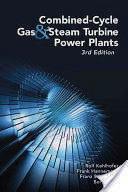




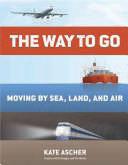

To All Members,
Tarikh: 14 March 2016
BerikutadalahsenaraicalonyanglayakuntukmendudukiTemuduga Profesional bagi tahun 2016.
Mengikut Undang-Undang Kecil IEM, Seksyen 3.8, nama-nama seperi terse arai erikut diter itka se agai alo - alo a g la ak u tuk e jadi Ahli I situsi, de ga s arat aha a ereka lulus Temuduga Profesional tahun 2016.
Sekiranya terdapat Ahli Korporat yang mempunyai bantahan terhadap a a- a a alo a g didapai idak sesuai u tuk menduduki Temuduga Profesional, surat bantahan boleh dike ukaka kepada Seiausaha Kehor at, IEM. Surat a taha hendaklahdikemukakansebulandaritarikhpenerbitandikeluarkan.
Ir. Yam Teong Sian Seiausaha Kehormat, IEM,
PERMOHONAN BARU NamaKelayakan
KEJURUTERAAN AWAM
JASMI BIN WAHABBE HONS (UTM) (CIVIL, 1991)
SHAMSUL RIZAL BIN ARIFFINBE HONS (UiTM) (CIVIL, 2008)
TAJUDIN BIN SULAIMANBSc HONS (GLASGOW) (CIVIL, 1986)
KEJURUTERAAN AUTOMOTIF
NORHABIB BIN MOHD KAMINBE HONS (UTeM) (MECHANICAL-THERMAL FLUIDS, 2009)
KEJURUTERAAN ELEKTRIKAL
KAVITHA MALAYANDYBE HONS (UTM) (ELECTRICAL, 2001)
NUR IDAYU BINTI JAMILBE HONS (UTM) (ELECTRICAL, 2009)
NURUL SHATHIRAH BINTI MOHD FISOLBE HONS (UMP) (ELECTRICAL SYSTEMS, 2012)
KEJURUTERAAN KAWALAN & INSTRUMENTASI
TEOH KOK LIANG BE HONS (UTP) (ELECTRICAL & ELECTRONICS, 2006)
KEJURUTERAAN NAVAL MEKANIKAL
ONG PEI TECK, OGDENBE HONS (LEICESTER) (MECHANICAL, 2001)
MOHD ZAIDI BIN SIDEKBE HONS (UKM) (MECHANICAL & MATERIAL, 1994) ME (UKM) (MANUFACTURING SYSTEMS, 2004) PhD (IMPERIAL COLLEGE LONDON) (2013)
PERPINDAHAN AHLI
No. AhliNamaKelayakan
KEJURUTERAAN AWAM
50710 GOH KOK YONG BE HONS (UTM) (CIVIL, 2008)
84929LEE KEE FOOBE HONS (UTP) (CIVIL, 2009)
34342 LIEW TZE KIAW BE HONS (UNIMAS) (CIVIL, 2007)
80780LING LEH SHIABE HONS (UNIMAS) (CIVIL, 2005)
23070MOHD RAMLI BIN PARMANBE HONS (UTM) (CIVIL, 2000)
42485 MUHAMMAD AMIRUDIN BIN JAUHARI BE HONS (USM) (CIVIL, 2009)
56549RAJA RUSDY IRWAN BIN RAJA HUSSIN BE HONS (UPM) (CIVIL, 2006)
43700 SIM CHIN YUNG, ANSON BE HONS (SWINBURNE) (CIVIL, 2012)
KEJURUTERAAN ELEKTRIKAL
58094AHMAD BIN ISMAILBE HONS (UMS) (ELECTRICAL & ELECTRONICS, 2009)
48939CHOW KOK SUNBE HONS (TASMANIA) (ELECTRICAL, 2010)
43923EVA@VELLARY PAULBE HONS (UMS) (ELECTRICAL & ELECTRONICS, 2009)
49227HAZER BIN MOHAMAD SAYUTIBE HONS (UMP) (ELECTRICAL-POWER SYSTEMS, 2009)
38322MOHD IBRAHIM BIN ABDUL WAHID BE HONS (UTeM) (INDUSTRIAL POWER, 2007)
36992 MUHAMMAD ARIFF BIN YAHYA BE HONS (UTP) (ELECTRICAL &ELECTRONICS, 2007)
50703MUHAMMAD FAZLI BIN NOZLANBE HONS (UTM) (ELECTRICAL, 2006)
45815TINAGARAN SUNDERAN BE HONS (UTP) (ELECTRICAL & ELECTRONICS, 2009)
KEJURUTERAAN ELEKTRONIK
12985MOHD SYAHRIN AMRI BIN MOHD NOH BE HONS (UTM) (ELECTRICAL, 1997)
KEJURUTERAAN KAWALAN & INSTRUMENTASI
84929KHAIDIR BIN MOHAMAD NORBE HONS (UNITEN) (ELECTRICAL & ELECTRONICS, 2002)
49273MUHAMMAD LUKMAN AL HAKIM BIN MUHAMMAD BE (MELBOURNE) (ELECTRICAL, 2005)
KEJURUTERAAN MEKANIKAL
43700 MOHAMAD SHAIFULASHRUL BIN ISHAK BE HONS (UTM) (MECHANICALAERONAUTICS, 2001) ME (UTM) (MECHANICAL, 2006) PhD (UTM) (MECHANICAL, 2015)
25647 NARENDRAN A/L RAMASENDERAN BE HONS (UTHM) (MECHANICAL, 2009) MSc (BERLIN) (2013)
58687 SIVAPRAKASH A/L MUNIANDI BE HONS (UNITEN) (MECHANICAL, 2004)
PERMOHONAN BARU MENJADI AHLI KORPORAT
KEJURUTERAAN MEKANIKAL -SUHAIMI BIN HASSANBE HONS (UTM) (MECHANICAL, 2000) MSc (LOUGHBOROUGH) (AUTOMOTIVE SYSTEMS, 2003) PhD (USM) (2012)
KEJURUTERAAN ELEKTRONIK
44129HASHIMAH BINTI HASHIMBE HONS (UNITEN) (ELECTRICAL & ELECTRONICS, 2000)
MSC (UKM) (MICROELECTRONIC, 2002) PhD (LA TROBE) (2013)
The Institution of Engineers Malaysia (IEM) introduced the “Engr.” title to be used by members of IEM who are not Professional Engineers since 2006. The use of the title “Engr.” gives a sense of pride and conidence to the Engineering Graduates as their degrees had been vetted and recognised by the Institution. In addition, the usage of ‘Engr’ was overwhelmingly received and supported by our young members who proudly used it as members in the engineering fraternity at large. However, the Board of Engineers, Malaysia (BEM) views the usage of “Engr.” title by IEM members as contravening “Clause 7 (1) (aa)” of the Registration of Engineers Act 1967 (Incorporating amendments up to 2015). IEM had been steadfast in maintaining our position in the interpretation of the use of “Engr.” and this matter had been deliberated with BEM for many years.
IEM had sought the intervention of the Minister of Works with regard to the usage of the “Engr.”. On 28 January 2016, the Minister called a meeting with IEM and BEM to discuss this issue. In the meeting, the Minister after hearing the presentation from both sides decided that his ofice will seek the opinion of the Attorney General (AG) with regard to the usage of the title “Engr.”. He also advised that IEM members should not use the title “Engr.” until we receive a decision from the AG’s ofice. IEM Council at its 401st Meeting on 21 March 2016 agreed to abide by the Minister’s decision until we receive the outcome from the AG’s ofice before deciding on the next course of action.
In the meantime, IEM Members are advised not to use the “Engr.” title pending the decision from the AG’s ofice.
LIM HUI YIN1ST YEAR (UNITEN) (CIVIL)
LIM MENG KAI 1ST YEAR (UNITEN) (CIVIL)
78659LIM SU PUEH2ND YEAR (UMP) (CIVIL)
LIM SU SHEN, JOEHANES 3RD YEAR (UTAR) (CIVIL)
LIM YIN JOON1ST YEAR (UNITEN) (CIVIL)
LOGARAJAN MUTHU 3RD YEAR (SWINBURNE) (CIVIL)
LOGASUNDAARI A/P
78703
P.MOHAN 2ND YEAR (UMP) (CIVIL)
LOO CHEE FENG3RD YEAR (UTAR) (CIVIL)
78656LOO KIAN LOON2ND YEAR (UMP) (CIVIL)
78672LOO PEI WEN2ND YEAR (UMP) (CIVIL)
LOO WAI JIN3RD YEAR (UTAR) (CIVIL)
LOO WEDI SEN3RD YEAR (UTAR) (CIVIL)
LOW HONG YAN 3RD YEAR (UTAR) (CIVIL)
LOW WEI JIAN3RD YEAR (UTAR) (CIVIL)
78711LOW WEI KEAT4TH YEAR (UMP) (CIVIL)
78724 LOW YEE HWA 4TH YEAR (UMP) (CIVIL)
78780 LYDIAIZNA BT ADAM 4TH YEAR (UMP) (CIVIL)
MAHRAN RAISAH BINTI MOHD. SIRI 1ST YEAR (UNITEN) (CIVIL)
78790 MANGAIBAGAN A/L RAJANDRAN 3RD YEAR (UMP) (CIVIL)
MELISSA LINDSAY BINTI GULTIN 4TH YEAR (UMS)(CIVIL)
MELSIE ENN JIMMUS 1ST YEAR (UMS)(CIVIL)
MERVIN NAIR A/L RAMESH KARNAN 1ST YEAR (UNITEN) (CIVIL)
78738MIEERRA JASSMIN BT MOHD ZAINUADDIN 4TH YEAR (UMP) (CIVIL)
78742MIMI SYAHIDA BINTI MUHAMAD 4TH YEAR (UMP) (CIVIL)
78716MISNAWATI BT BOHARI 4TH YEAR (UMP) (CIVIL)
MOHAMAD AHMAD DABLEH 4TH YEAR (IUKL) (CIVIL)
MOHAMAD FAHMI B. MOHD. ARSHAD 1ST YEAR (UNITEN) (CIVIL)
78805MOHAMAD FARHAN BIN ABU SAMAH 4TH YEAR (UMP) (CIVIL)
MOHAMAD NUR
SYIHABUDDIN B. MOHD YUSOFF 1ST YEAR (UTHM) (CIVIL)
MOHAMAD SYAFIQ B. MANSOR 1ST YEAR (UTHM) (CIVIL)
MOHAMAD ZACHROY ANAZFITRY BIN MISDIN 1ST YEAR (UNITEN) (CIVIL)
MOHAMAD ZULHILMI BIN JAAFAR 1ST YEAR (UTHM) (CIVIL)
MOHAMMAD FAEZ BIN MASROM 1ST YEAR (UTHM) (CIVIL)
MOHAMMAD FARIS
ZUHAIRI BIN ANUAR 1ST YEAR (UMS)(CIVIL)
MOHAMMAD OMAR
HAMID WAGIEALLA 1ST YEAR (UNITEN) (CIVIL)
MOHAMMAD SALMAN
BIN SAZLI 1ST YEAR (UNITEN) (CIVIL)
MOHD AFIQ
ZULFAIZIE BIN JAPRI 1ST YEAR (UMS)(CIVIL)
MOHD HELMI CHUA BIN MAHADY 1ST YEAR (UTHM) (CIVIL)
78761MOHD KHAIRUL AZAM B. MD KHAIRUDIN 3RD YEAR (UMP) (CIVIL)
MOHD KHAIRULIZZAT BIN MOHD BISI 1ST YEAR (UMS)(CIVIL)
MOHD SHAHID BIN ABDUL RANIT 4TH YEAR (UMS) (CIVIL)
MOHD ZARIF NASHRIQ BIN MOHD NOR 1ST YEAR (UNITEN) (CIVIL)
MOK YI YONG 3RD YEAR (UTAR) (CIVIL)
78744 MUHAMAD AIDIL BIN SA'AIDI 4TH YEAR (UMP) (CIVIL)
MUHAMAD AMIRULFITRY BIN ROUSTUM SHAH 1ST YEAR (UNITEN) (CIVIL)
MUHAMAD FARID B. MUSTAFA 1ST YEAR (UTHM) (CIVIL)
MUHAMAD NAIM BIN ZAKARIAH 1ST YEAR (UNITEN) (CIVIL)
MUHAMAD SYAFIQ HAFIZ BIN MAASAH 1ST YEAR (UTHM) (CIVIL)
MUHAMAD SYAZNI ASYRAF BIN SAKKA 1ST YEAR (UMS)(CIVIL)
MUHAMAD ZAKI B. MUHAMAD YUSUF 1ST YEAR (UTHM) (CIVIL)
MUHAMMAD AFIQ BIN
ABDULAZIZ 1ST YEAR (UTHM) (CIVIL)
MUHAMMAD AFIQ BIN
ROSLAN 1ST YEAR (UTHM) (CIVIL)
MUHAMMAD AFIQ
SYAHMI BIN MOHD ADHA 1ST YEAR (UNITEN) (CIVIL)
MUHAMMAD AIMAN B MAT NASIR 1ST YEAR (UNITEN) (CIVIL)
MUHAMMAD AIMAN BIN RAMLE 1ST YEAR (UTHM) (CIVIL)
MUHAMMAD AKMAL BIN ABDUL RASHID 1ST YEAR (UNITEN) (CIVIL)
MUHAMMAD AMMAR
ASHRAFF BIN MOHD. FARIS 1ST YEAR (UTHM) (CIVIL)
MUHAMMAD AQIL
FARHAN BIN VO HASAN 1ST YEAR (UNITEN) (CIVIL)
MUHAMMAD ASYRAF BIN MASRI 2ND YEAR (UTM) (CIVIL)
MUHAMMAD AZIM ANAS BIN ABDULAZIZ 1ST YEAR (UNITEN) (CIVIL)
MUHAMMAD AZRUL IZZANI 1ST YEAR (UNITEN) (CIVIL)
MUHAMMAD FAHMI B. ABD RAHMAN 1ST YEAR (UTHM) (CIVIL)
78431MUHAMMAD FAIZ BIN ZAHARUDDIN 4TH YEAR (UNISEL) (CIVIL)
MUHAMMAD FIKRIL AZIM BIN ABDUL SANI 1ST YEAR (UNITEN) (CIVIL)
MUHAMMAD HAIDHAR BIN ROSLI 1ST YEAR (UNITEN) (CIVIL)
MUHAMMAD HANAFI BIN AHMAT RITWAN 1ST YEAR (UNITEN) (CIVIL)
MUHAMMAD HAZIQ B. SAIPOLBAHRI 1ST YEAR (UTHM) (CIVIL)
MUHAMMAD HAZWAN BIN BAHANIN 1ST YEAR (UTHM) (CIVIL)
MUHAMMAD HIDAYAH 'ASMAWI BIN AWANG DAMIT 4TH YEAR (UMS)(CIVIL)
MUHAMMAD IZUAN BIN EDWIN CABASAG USMAN 1ST YEAR (UNITEN) (CIVIL)
MUHAMMAD KHAIRUL NIDZAM BIN ANUWAR 1ST YEAR (UTHM) (CIVIL)
MUHAMMAD LUQMAN BIN BAHRIN 1ST YEAR (UMS)(CIVIL)
MUHAMMAD SAIFUDDIN BIN SULAIMAN 1ST YEAR (UTHM) (CIVIL)
MUHAMMAD SHAFIQ BIN ABDUL JALIL 1ST YEAR (UTHM) (CIVIL)
MUHAMMAD SULHI B. ZAINUDIN 1ST YEAR (UTHM) (CIVIL)
MUHAMMAD TAUFIQ LI ZULKIFLI LI 1ST YEAR (UMS)(CIVIL)
MUHAMMAD ZAHIN BIN NOR SAH @ NOOR SHAH 1ST YEAR (UNITEN) (CIVIL)
MUHAMMAD ZAKWAN BIN HAMIZI 1ST YEAR (UTHM) (CIVIL)
MUHAMMAD ZARIF SYAZWAN BIN SUHAINI 1ST YEAR (UTHM) (CIVIL)
MUHAMMAD ZIQRIE BIN AZMI 1ST YEAR (UTHM) (CIVIL)
MU'IZZUDDIN BIN HERMAN 1ST YEAR (UTHM) (CIVIL)
78785NAASIHA BINTI IDERIS 3RD YEAR (UMP) (CIVIL)
NABILA FAIQAH BINTI JASMIN 1ST YEAR (UTHM) (CIVIL)
78809NABILAH BINTI MAMAT 4TH YEAR (UMP) (CIVIL)
NABILAH UNAISAH BINTI MAD DALI 2ND YEAR (UMS)(CIVIL)
NADHIRAH BINTI ZAINALABIDIN 1ST YEAR (UTHM) (CIVIL)
NAILI HANEESA BINTI ABU HASSAN 1ST YEAR (UNITEN) (CIVIL)
NAJWA NABILLA BINTI ALIUSIN 1ST YEAR (UMS)(CIVIL)
NATASHAAMIRA BINTI HAMIDI 1ST YEAR (UTHM) (CIVIL)
78662NG HUI PING1ST YEAR (UMP) (CIVIL)
NG JIA WEI 1ST YEAR (UNITEN) (CIVIL)
NG JIA WEI 1ST YEAR (UTAR)(CIVIL)
NGAN LIK HENG3RD YEAR (UTAR) (CIVIL)
NIK MOHD HAMZAH BIN NIK MOHNAWI 1ST YEAR (UTHM) (CIVIL)
78714 NIK NUR AISYAH
BINTI MEGAT ANUAR 4TH
NOOR FADZILAH AYUB
78796NOOR
78769NOORHAYA BT KASA 3RD YEAR (UMP) (CIVIL)
78775 NOR ASMAQ BINTI BAHAROM 4TH YEAR (UMP) (CIVIL)
78760NOR BAHIAH BINTI MOHD FAUZI 4TH YEAR (UMP) (CIVIL)
NOR FADZILAH BT MD ZIM 1ST YEAR (UNITEN) (CIVIL)
78740NOR FAEZAH BINTI AFFRI 4TH YEAR (UMP) (CIVIL)
NOR FATIHAH BINTI IBRAHIM 1ST YEAR (UNITEN) (CIVIL)
NOR HANANI BINTI HASAN NORDIN 1ST YEAR (UTHM) (CIVIL)
78741NOR HASLINDA BINTI ABDULLAH 4TH YEAR (UMP) (CIVIL)
NOR HASLINDA BINTI ABDULLAH 2ND YEAR (UMS)(CIVIL)
NOR HIDAYAH BINTI MOHD ISA 4TH YEAR (UMP) (CIVIL)
78781NOR HIDAYAH BINTI MUHAMAD ASRI 4TH YEAR (UMP) (CIVIL)
NOR SYAHIRAH BT AZMAN 1ST YEAR (UNITEN) (CIVIL)
78811NOR ZARIEFA BINTI ZAHARI 3RD YEAR (UMP) (CIVIL)
NORAYSHAH BINTI ISHAK 1ST YEAR (UNITEN) (CIVIL)
NORAZILA BINTI MOHAMED ASLAM 1ST YEAR (UNITEN) (CIVIL)
NORFARA IDAYU BTE OTHMAN 1ST YEAR (UNITEN) (CIVIL)
NORFARAZIELA BINTI RADZUAN 1ST YEAR (UNITEN) (CIVIL)
NORFAZRINAH BINTI AB.RAHMAN 1ST YEAR (UMS)(CIVIL)
NORHAFIZAH BINTI PARLIN 1ST YEAR (UMS)(CIVIL)
78810NORHAMIZA BINTI ROSSLI 4TH YEAR (UMP) (CIVIL)
NUR ADIBAH BINTI JALALUDDIN 1ST YEAR (UNITEN) (CIVIL) NUR AFIQAH BINTI KAMARUZAMAN 1ST YEAR (UTHM) (CIVIL) NUR AIN BT MUSTAFFA 1ST YEAR (UNITEN) (CIVIL)
78735NUR AIN BT NIK MAZLAN 3RD YEAR (UMP) (CIVIL) NUR AISYAH BT ABD RASHID 1ST YEAR (UNITEN) (CIVIL) NUR AIZA BINTI DARNAK 1ST YEAR (UTHM) (CIVIL)
78773 NUR ALIYANA BINTI ALIHAD 4TH YEAR (UMP) (CIVIL)
78784 NUR AQILAH BINTI MOHD DRUS 4TH YEAR (UMP) (CIVIL) NUR ARIFF BIN ZAINUDIN 1ST YEAR (UTHM) (CIVIL) NUR ARIFFAH BT ASAUDI 3RD YEAR (UITM) (CIVIL)
78758 NUR ASMA' BINTI SUHAIMEE 4TH YEAR
(UMP) (CIVIL)
(UMP) (CIVIL)
AZIEMAH BINTI MOHAMAD ZIN 1ST YEAR (UTHM) (CIVIL)
NUR AZIRAAYUNI BT AB AZIZ 4TH YEAR (UMP)
BINTI ABDUL GHAFAR 1ST YEAR (UNITEN) (CIVIL) NUR FARRAH ATIQAH BT. MD DZAHIR 1ST YEAR (UTHM) (CIVIL) NUR FARRAH BINTI SM BAKRI 1ST YEAR (UTHM) (CIVIL)
NUR FATIHAH BINTI ISMAR 2ND YEAR (UMS)(CIVIL)
NUR FAZLIDA ASHIKIN BT MAKHTAR 1ST YEAR (UTHM) (CIVIL)
78770NUR HAFIZAH BINTI MOHD SHAFEE 3RD YEAR (UMP) (CIVIL)
78777NUR IRWANI BINTI OTHRAN 4TH YEAR (UMP) (CIVIL)
NUR IZRIN BT ZAHIRUDDIN MARICAN 1ST YEAR (UNITEN) (CIVIL)
NUR IZZAH RASYIDAH BT MOHD FAUZI 1ST YEAR (UTHM) (CIVIL)
NUR IZZATI BT MOHD NAZRI 1ST YEAR (UNITEN) (CIVIL)
NUR IZZATY BINTI AZNI 1ST YEAR (UTHM) (CIVIL)
78718NUR JULAIKHA BINTI A.RAZAK @ AZIZ 4TH YEAR (UMP) (CIVIL)
NUR RAHMANIYAH BT BAHARUDIN 1ST YEAR (UNITEN) (CIVIL)
NUR RAZIN BIN NOR 'AINI 1ST YEAR (UTHM) (CIVIL)
NUR SAFIQQAH BT NAZARI 1ST YEAR (UTHM) (CIVIL)
NUR SHAQEENAH BINTI ZAINUDIN 1ST YEAR (UNITEN) (CIVIL)
NUR SYAHIRAH BT BORHAN 2ND YEAR (UMS)(CIVIL)
78771NUR SYAMIMI BINTI AZLI 3RD YEAR (UMP) (CIVIL)
78734NUR ZAMIRA BINTI MOHAMAD ZAKER 4TH YEAR (UMP) (CIVIL)
78787NURAIN ZAHIDAH BINTI NAZARUDIN 4TH YEAR (UMP) (CIVIL)
78762NURAMALINA BT. SHAMSUDIN 4TH YEAR (UMP) (CIVIL)
NURAZIZY BIN YUSOF 1ST YEAR (UTHM) (CIVIL)
NURFATIN AMANINA BT MOHAMED NOH 1ST YEAR (UNITEN) (CIVIL)
NURHAFIDZ BIN ABD RAHAMAN 1ST YEAR (UTHM) (CIVIL)
NURHANANI BINTI ABD. AZIZ 1ST YEAR (UNITEN) (CIVIL)
NURHANANIA BINTI NORAZUWA 1ST YEAR (UNITEN) (CIVIL)
78719NURHIDAYAH BINTI MOHD ZAINAL 4TH YEAR (UMP) (CIVIL)
NURSAFIQAH BINTI ABD RAHIM 1ST YEAR (UNITEN) (CIVIL)
NURSAKMAWANI BINTI ABDUL RAFAR 1ST YEAR (UTHM) (CIVIL)
NURSYADZATUL TASNIM BT ROSLIN 1ST YEAR (UNITEN) (CIVIL)
NURSYAMIM ADILA BT SELAMAT 1ST YEAR (UNITEN) (CIVIL)
NURSYAZLIN SYAFIQAH BINTI MOHAMAD ZABIDI 2ND YEAR (UMS)(CIVIL)
78776NURSYAZWANI BINTI MAT LAZIM 4TH YEAR (UMP) (CIVIL)
78793NURTIKA NABILAH BINTI ABDUL SINEE 3RD YEAR (UMP) (CIVIL)
78708 NURULAIN SYAZWANI BT AHMAD AZMAN 2ND YEAR (UMP) (CIVIL)
78772 NURULAINA BINTI HUSAINI 4TH YEAR (UMP) (CIVIL)
NURULAKMALIZA BINTI OTHMAN 1ST YEAR (UTHM) (CIVIL)
NURULAMIRAH BT ABDUL MALIK 1ST YEAR (UNITEN) (CIVIL)
NURULASHIKIN BINTI MD SUHAINI 1ST YEAR (UTHM) (CIVIL)
78788 NURULATIKAH BINTI AHMAD KHAN 3RD YEAR (UMP) (CIVIL)
78710 NURULATIKHA BINTI KHARIULABIDIN 2ND YEAR (UMP) (CIVIL)
NURUL DIANA SYAKILA BT MOHAMAD ROSLI 1ST YEAR (UTHM) (CIVIL)
78661NURUL FAJRINA HAZIRAH BINTI AZMAN 2ND YEAR (UMP) (CIVIL)
NURUL HAZIRAH AFIQAH BINTI ABU HABIDAH 1ST YEAR (UTHM) (CIVIL)
NURUL HAZWANI BINTI MOHD JAMALUDIN 1ST YEAR (UNITEN) (CIVIL)
NURUL HIKMAH BINTI ARIS 1ST YEAR (UTHM) (CIVIL)
78430NURUL HUSNA BINTI ABDULLAH 2ND YEAR (UTM) (CIVIL)
78806NURUL LYANA BT AL-ZAHABA 4TH YEAR (UMP) (CIVIL)
78763NURUL MASLIANA BT KHAIRILANUAR 4TH YEAR (UMP) (CIVIL)
78783NURUL MURSHIDA BT MOHD SABRI 4TH YEAR (UMP) (CIVIL)
NURUL NADHIRA BINTI HAMZAH 1ST YEAR (UTHM) (CIVIL)
78753NURUL NADIA BINTI MOHTAR 3RD YEAR (UMP) (CIVIL)
NURUL NATASHA NABILA BINTI NAIM 1ST YEAR (UNITEN) (CIVIL)
78782NURUL ZAFIRAH BINTI OTHMAN 4TH YEAR (UMP) (CIVIL)
NURZIANA BINTI ABD
MALIKI 1ST YEAR (UTHM) (CIVIL)
OH CHEN HOE 2ND YEAR (UTAR)(CIVIL)
ONN HUI YUAN1ST YEAR (UNITEN) (CIVIL)
78712OOI CHUN SHU4TH YEAR (UMP) (CIVIL)
POORNASUTHRAA/P
SUBRAMANIAM 1ST YEAR (UNITEN) (CIVIL)
PUTRA ISKANDAR
BIN WAHID 1ST YEAR (UNITEN) (CIVIL)
PUTRI NABILA BINTI ABD KARIM 1ST YEAR (UTHM) (CIVIL)
PUTRI NUR IMAN BINTI KHAIRUDDIN 1ST YEAR (UNITEN) (CIVIL)
QUADRA REGANOLD JOIRUH 4TH YEAR (UMS)(CIVIL)
78707RAHAMAH WATI BINTI SULAEMAN 2ND YEAR (UMP) (CIVIL)
RAJA EZZAH SHAMIMI BINTI RAJA HAFIZ 1ST YEAR (UNITEN) (CIVIL)
78802RAJA NORHAYATI BT RAJA SULAIMAN 4TH YEAR (UMP) (CIVIL)
RANJGHINI A/P
BALASUBRAMANIAM 1ST YEAR (UNITEN) (CIVIL)
RASHIKA BINTI SAFNIH 1ST YEAR (UNITEN) (CIVIL)
78666 RATHEY A/P PARAMASIVAM 2ND YEAR (UMP) (CIVIL)
RAZAANAH MARDHIYAH BINTI ZAINUDIN 1ST YEAR (UTHM) (CIVIL)
RAZIE NUR ELYN BINTI MOHD RAZAK 1ST YEAR (UNITEN) (CIVIL)
RAZMINUR 'AINA BT. AHMAD RAZI ZA'BA 1ST YEAR (UNITEN) (CIVIL)
RENUKHAA/P VEGURGAMA 1ST YEAR (UTHM) (CIVIL)
ROSAIDI BIN JAMAL4TH YEAR (UTM) (CIVIL)
78687 RUBENI A/P RAJA 2ND YEAR (UMP) (CIVIL)
RUSZAIMI BIN KAMSAH 1ST YEAR (UMS)(CIVIL)
SARAH IZATI BT. ISMAIL 1ST YEAR (UNITEN) (CIVIL)
SARAH LAONG ANAK MEDANG 1ST YEAR (SWINBURNE) (CIVIL)
SEAMUS SHENTON LIM CHIAI 1ST YEAR (SWINBURNE) (CIVIL)
SHAIK MUHAMMAD
MUDIN BIN SHAIK AHMAD FADZIL 1ST YEAR (UNITEN) (CIVIL)
SHANMUGAN NAGAPPAN 1ST YEAR (UNITEN) (CIVIL)
SHANNEN JAINI 1ST YEAR (UMS)(CIVIL)
SHARIFAH ZAFIRAH
BT SYED ZAINAL
ABIDIN JAMALULLIL 1ST YEAR (UNITEN) (CIVIL)
SHARMADAYALINI A/P S.CHANDIRAN 1ST YEAR (UNITEN) (CIVIL)
78732 SHARMILAA/P SEWAJJE 3RD YEAR (UMP) (CIVIL)
SHIA CHIA KIET 4TH YEAR (SWINBURNE) (CIVIL)
78675SIM MEI CHEE2ND YEAR (UMP) (CIVIL)
78750 SIOW SIN YANG 4TH YEAR (UMP) (CIVIL)
78755 SITI AISHAH BINTI MOHD ALKAMAL 4TH YEAR (UMP) (CIVIL)
SITI ASYIAH BINTI MUKASIM 2ND YEAR (UMS)(CIVIL)
SITI BARKEH BINTI YAHYA 1ST YEAR (UTHM) (CIVIL)
SITI FATIMAH BINTI BADRUDDIN 1ST YEAR (UTHM) (CIVIL)
78720SITI HAJAR BT SA'ADIN 3RD YEAR (UMP) (CIVIL)
78812SITI NAFISAH BT SALLEH 4TH YEAR (UMP) (CIVIL)
SITI NURWALA 1ST YEAR (UNITEN) (CIVIL)
78706SOLAHUDDIN BIN AZUWA 2ND YEAR (UMP) (CIVIL)
78677 SOONG HUI YING 2ND YEAR (UMP) (CIVIL)
STANLEY SALIS 1ST YEAR (UNITEN) (CIVIL)
STEFAN LAMBERT ANAK SINANG 1ST YEAR (UNITEN) (CIVIL)
SUHADAH BINTI ELIAS 1ST YEAR (UTHM) (CIVIL)
SWEE KEH GYE 1ST YEAR (UNITEN) (CIVIL)
SWEE MAIN GYE 2ND YEAR (UNITEN) (CIVIL)
78765SYAMIM NADIAH BT MOHD NAJIB 4TH YEAR (UMP) (CIVIL)
78722SYAMIMI INANI BINTI RAZALI 3RD YEAR (UMP) (CIVIL)
SYAZWANI BINTI ZAMZAM 1ST YEAR (UTHM) (CIVIL)
TAN CHENG YUAN, SHANON 1ST YEAR (UTAR)(CIVIL)
TAN CHUANG MING3RD YEAR (UTAR) (CIVIL)
78746TAN HOCK HEE4TH YEAR (UMP) (CIVIL)
TAN JENG WEI 2ND YEAR (UTAR)(CIVIL)
TAN KAI WEN 1ST YEAR (UTAR)(CIVIL)
TAN KANG YU 3RD YEAR (UTAR) (CIVIL)
TAN KIAN SHEN 1ST YEAR (UTAR)(CIVIL)
78749TAN KIM GUAN4TH YEAR (UMP) (CIVIL)
TAN KIM YONG, EDWARD 1ST YEAR (CURTIN) (CIVIL)
78674TAN SIEW LENG2ND YEAR (UMP) (CIVIL)
78747 TAN SOON TECK 4TH YEAR (UMP) (CIVIL) TAN WEI KIONG3RD YEAR (UTAR) (CIVIL)
78654TAN WOON HAN2ND YEAR (UMP) (CIVIL)
78799 TAN YEONG YU 4TH YEAR (UMP) (CIVIL)
TANG WAI HON 1ST YEAR (UNITEN) (CIVIL)
TEE HUI EU3RD YEAR (UTAR) (CIVIL)
TEE TZER KAI 3RD YEAR (UTAR) (CIVIL)
78756 TEH AFZHAN BINTI ZAKARIA 4TH YEAR (UMP) (CIVIL)
78786TENGKU MUHAMMAD HASIF B TENGKU M. SALIM 3RD YEAR (UMP) (CIVIL)
TEO ZHEN BIN3RD YEAR (UTAR) (CIVIL)
TEY PENG LIU3RD YEAR (UTAR) (CIVIL)
78665 THARUSHINI A/P
THIAGARAJAN 2ND YEAR (UMP) (CIVIL)
THOMSON LUNSIN2ND YEAR (UMS) (CIVIL)
THUNG MUN HENG 2ND YEAR (UTAR)(CIVIL)
78745TING LI CHAO4TH YEAR (UMP) (CIVIL)
TING SIE JUN3RD YEAR (UTAR) (CIVIL)
TIO JIA LUN 2ND YEAR (UTAR)(CIVIL)
TOH ZING HUI, VINCENT 3RD YEAR (SWINBURNE) (CIVIL)
UDEYATARSHINIY A/P UDEYASURIAN 1ST YEAR (UNITEN) (CIVIL)
UMMI SURAYA BINTI MD YATIM MUSTAFA 1ST YEAR (UTHM) (CIVIL)
78803UMMU RABIATUL ADAWIYAH BINTI MOHD ROSDI 4TH YEAR (UMP) (CIVIL)
VOON SOON LOON 4TH YEAR (SWINBURNE) (CIVIL)
WAFFA BINTI ADNAN 1ST YEAR (UNITEN) (CIVIL)
WAN FATIN AFIFAH BT WAN MOHD FAUZI 1ST YEAR (UTHM) (CIVIL)
Note: Remaining list would be published in the May 2016 issue. For the list of approved “ADMISSION TO THE GRADE OF STUDENT”, please refer to IEM web portal at http://www.myiem.org.my.
Pengumuman yang ke-90
SENARAI PENDERMA KEPADA WISMA DANA BANGUNAN IEM
Institusi mengucapkan terima kasih kepada semua yang telah memberikan sumbangan kepada tabung Bangunan Wisma IEM. Ahli-ahli IEM dan pembaca yang ingin memberikan sumbangan boleh berbuat demikian dengan memuat turun borang di laman web IEM http://www.iem. org.my atau menghubungi secretariat di +603-7968 4001/5518 untuk maklumat lanjut. Senarai penyumbang untuk bulan Januari 2016 adalah seperti jadual di bawah:
335572 ABDULAZIZ BIN ABDULLAH
415970ABDUL RAZAK BIN MAT YUNUS
519438ADNAN BIN MD ZAIN
674390AHMAD FAUZI BIN FUDZIN
703394AHMAD HUSAINI BIN SULAIMAN
822055AHMAD SHAMSOL BIN JUSOH
911078 AHMAD ZAKIYUDDIN BIN ABD. RAHMAN
1001650AIK SIAW KONG
11 39090ALI AHMAD BIN HAMID
1204961 ASOK KUMAR S/O HARILAL HIRA PATEL
1323694 AUGUSTINE MARIAAROKIASAMY
1410057BOEY HOR MENG
1510801BOEY WEI LUN
1608427BONG KUEK POH, FREDERICK
1743906CHE FISOL BIN ABDUL HAMID
1803838CHEAH BOON HWA
1921162 CHEW TAT SEN
2006828CHIN THAU CHON
2106600CHUA KON YIN
2203650CHUA LEE BOON
2334413DR. HOW YOU CHUAN
2412809DR. MOHD SABRI BIN ABDULLAH
2506580 FAUZI BIN ABDULLAH
2629705 GAN HONG TENG
2702737GOH KIM SING
2803457HARBANS SINGH S/O KISHAN SINGH
2905955 HONG LING YEAN
3025557HONG WAI CHIN
3160074HOR KOK LUEN
3217508HOW CHI WEI
3316069HUSAINI BIN HUSIN
3413102ISMAIL BIN MAMAT
3580584JAMALUDDIN BIN MAHMUD
3606451JAMES PONNIAH JOSEPH
3721883 JANANG AK BUNGSU
3875464KAMALRULARIFFIN BIN YUSOF
3914484 KHAIRUDIN BIN AHMAD
4016659KHAZALI BIN HAMID
4102601KHOO HENG KEONG
4223101KUEK HANN YIH, KELVIN
4302290 LAU KA TING
4409834LEE CHIN CHAI
4515344LEE ENG WAH
4602382LEE HEUK PING
4713793LEE KUAN KAM
4879579LEE WEI SZER
4920090 LEE YEE SENG
5066535LEONG HENG ONN
5104152LEONG KEE CHAN
5212626 LEONG MUN YEAN
5324138LEONG YEK LOONG
5427491LIEW GUAN DUT
5506765 LIEW YAN SIN
5607526LIM CHIN KEAT
5704979LIM OOI JOO, PAUL
5806216LOKE HOON BOO
5923672LOURDES RAJ A/L DHOMNIC
6079276 MGT. NASARUDDIN BIN MGT. MAZELAN
6125258MOHAMAD FAIZAL BIN SANI
6243516MOHAMAD KHUSAIRY BIN HJ AHMAD
6301974 MOHAMED ALI BIN YUSOFF
6416323MOHAMED AZMI BIN ABDUL KARIM
6513578MOHD AZAHAR BIN DON
6638714MOHD NASHARUDDIN BIN HASHIM
6706789MOHD. FAZLI BIN OSMAN
6807943MUHAMMAD BUSHRO BIN MAT JOHOR
6906004NEW CHENG SWEE
7070236NG BOON WEI
7121285NG WENG LIANG
7228999NURUL HUDA BIN ROMLI
7312544ONG BOON HAI
7414275OOI CHIN KEONG

75PERUNDING KCT SDN BHD
7657130POH WEE HOON
7762159 RAJA ZAHILAH BINTI RAJA MOHD. RADZI
7814979RAYMON MANGALARAJ
7905722RAZALI BIN MUDA
8015114ROSLAN BIN OMAR
8170355ROSLY BIN PENGIRAN
8227138ROSMADI BIN ZAMRI
8326970 S. VEERAKUMAR A/L S. SUBRAMANIAM
8426989SHAHRULAFFENDY BIN MAHAT
8535559 SHARIFAH FATIMAH BINTI TUANKU HJ ABDULLAH
8607029 SIA CHAY THIAM
8736992SONG YOKE CHIN
8845798 SUBRAMANIAM A/LANPUALAGAN
8953831TAY KHO JIM
9020099TEE BENG HOCK
9105327TEH PIAW NGI
9214400 TEO JIN ANN
9318906 TEOH TEONG LIANG
9407537TIONG HONG HEE
9549376 VISHNUVARTTAN A/L PUSHPANATHAN
9613448 WAN KOA YIT
9703036WONG CHEE ON
9817560WONG SU KEN
9936316 WONG YONG MING
10006424WONG, RORY KIM
10130640YONG POH HING, HENRY
10209351 YONG VOON YUI
10304531YONG YEW WEI
10402163YONG YUN FUI
10519403YU CHING LIN, AGATHA
10641154YU SENG CHIANG
10749313 YUZRIAN EFREN YUNUS
10815913ZAINAL FITHRI BIN MAT ZAHARI
10914432 ZULKIFLY BIN YUSOF

